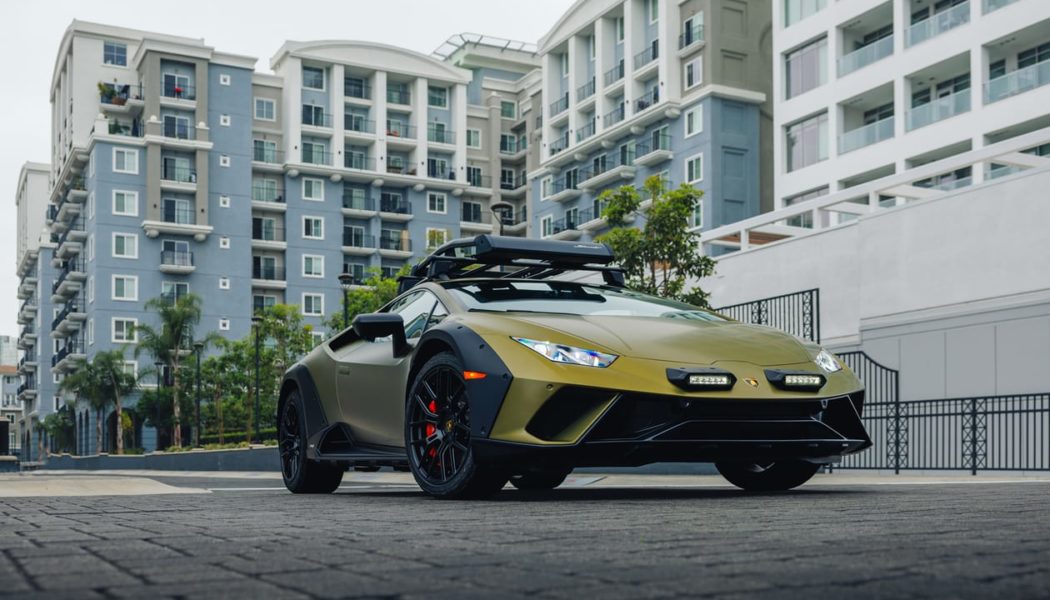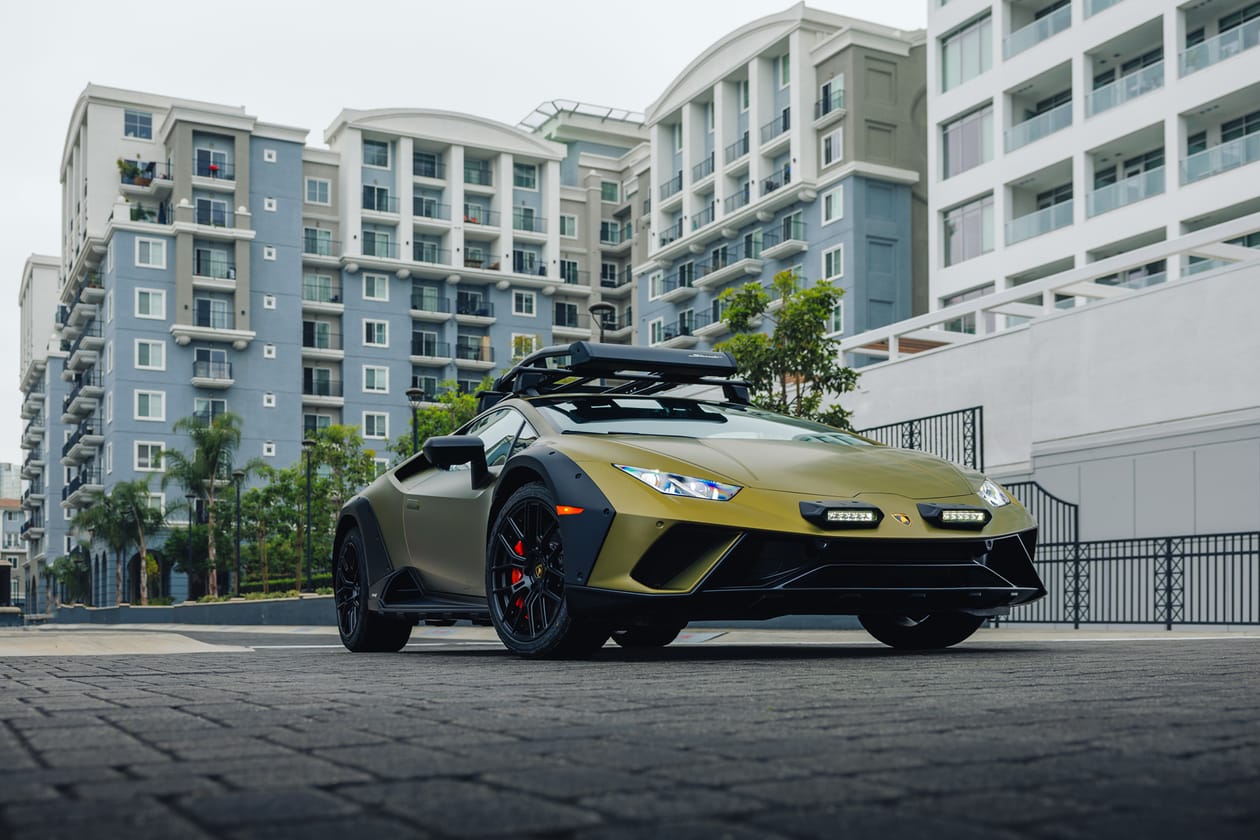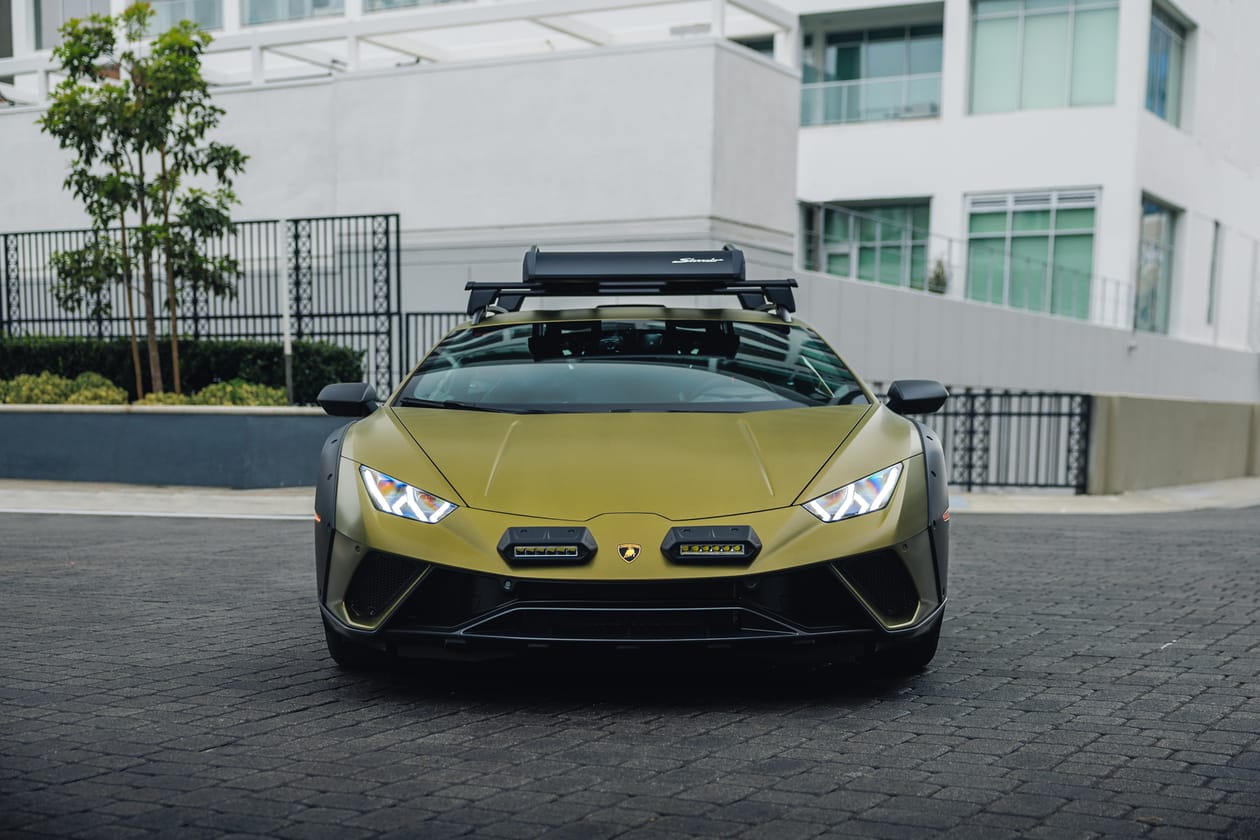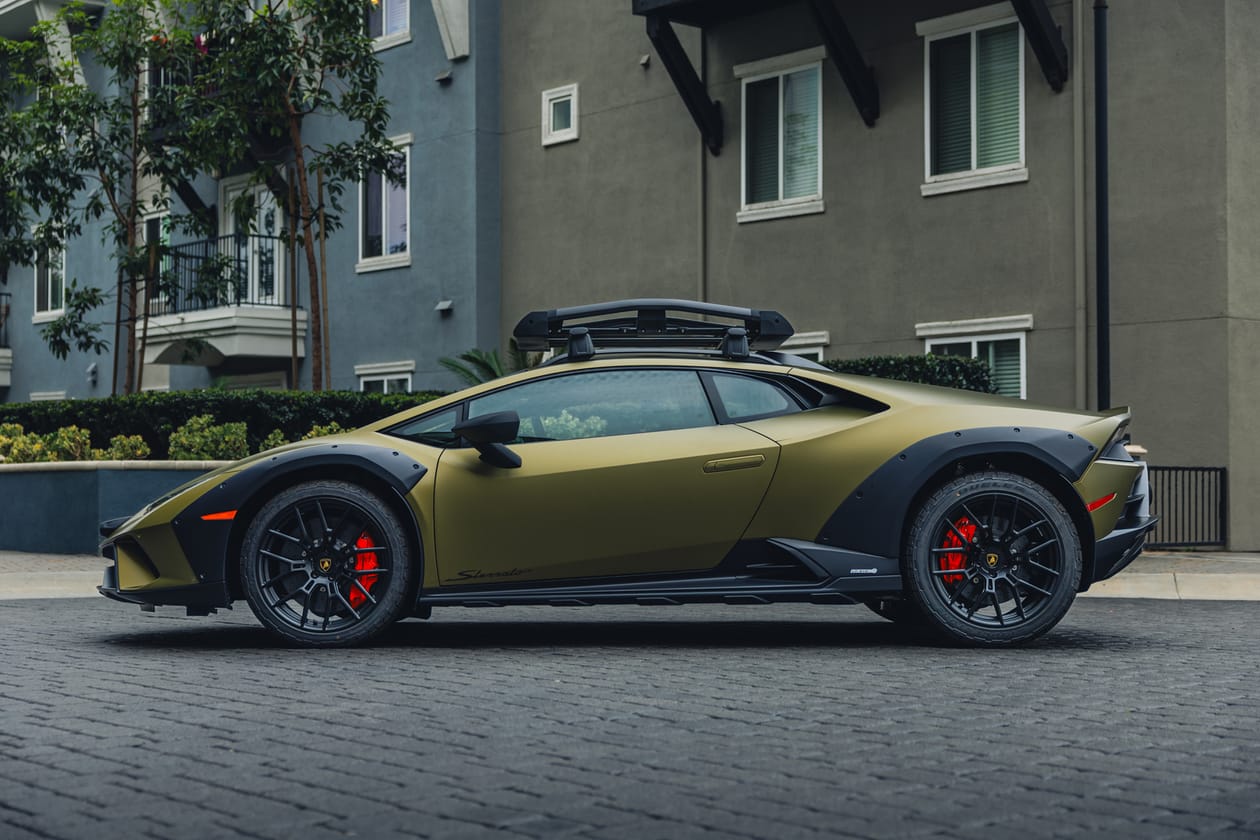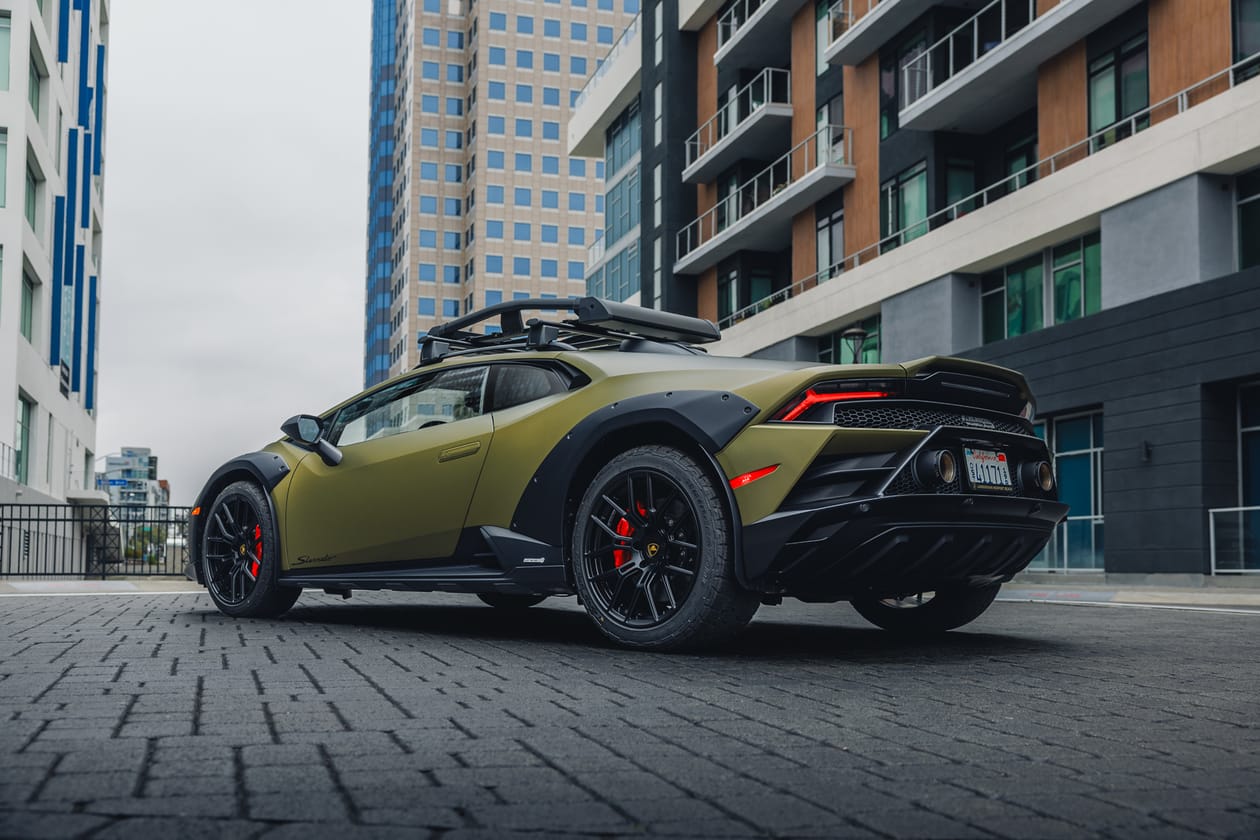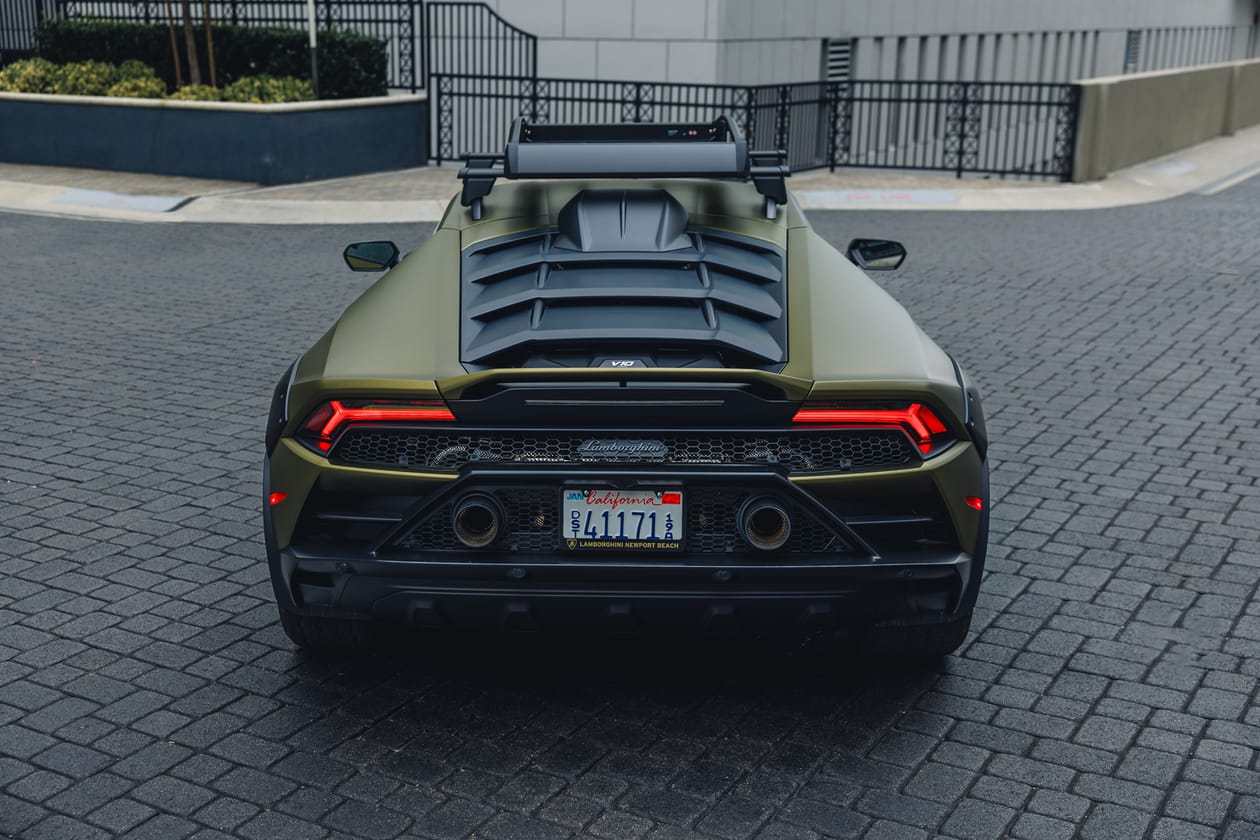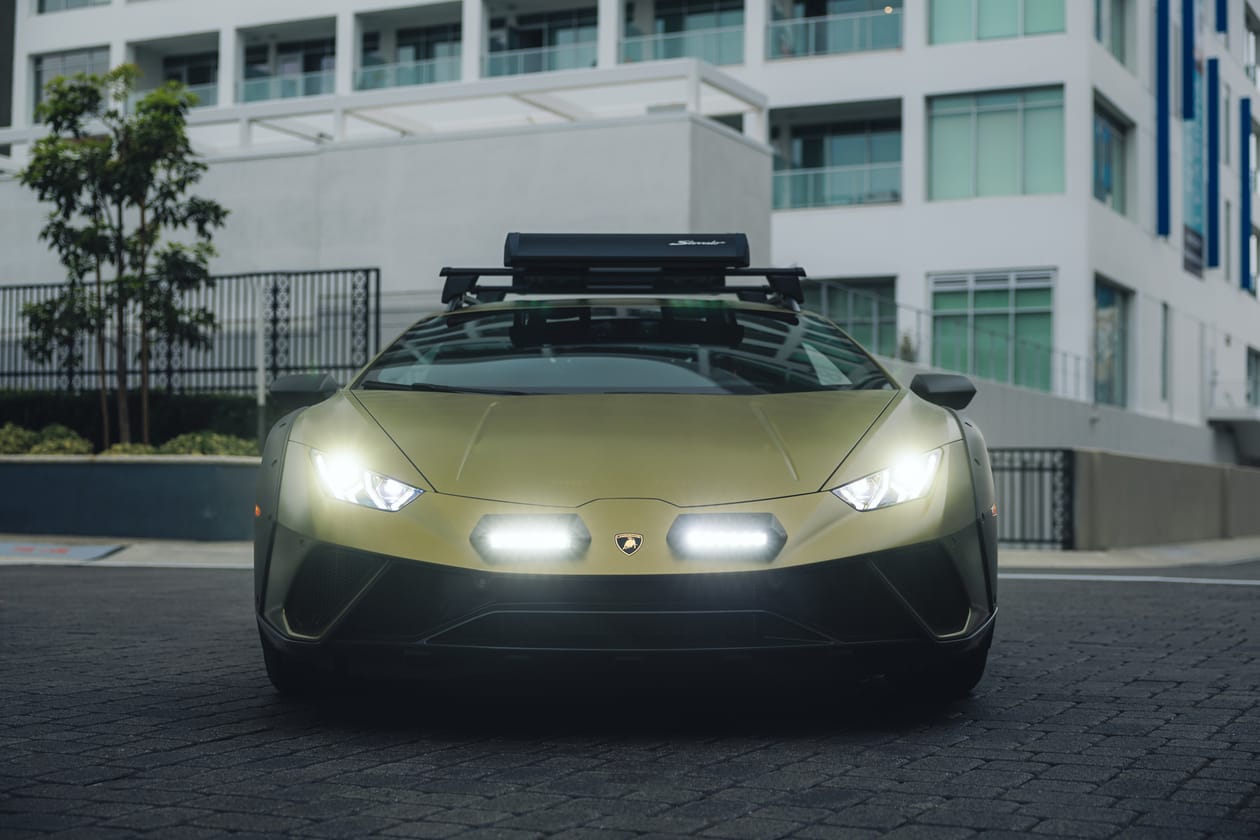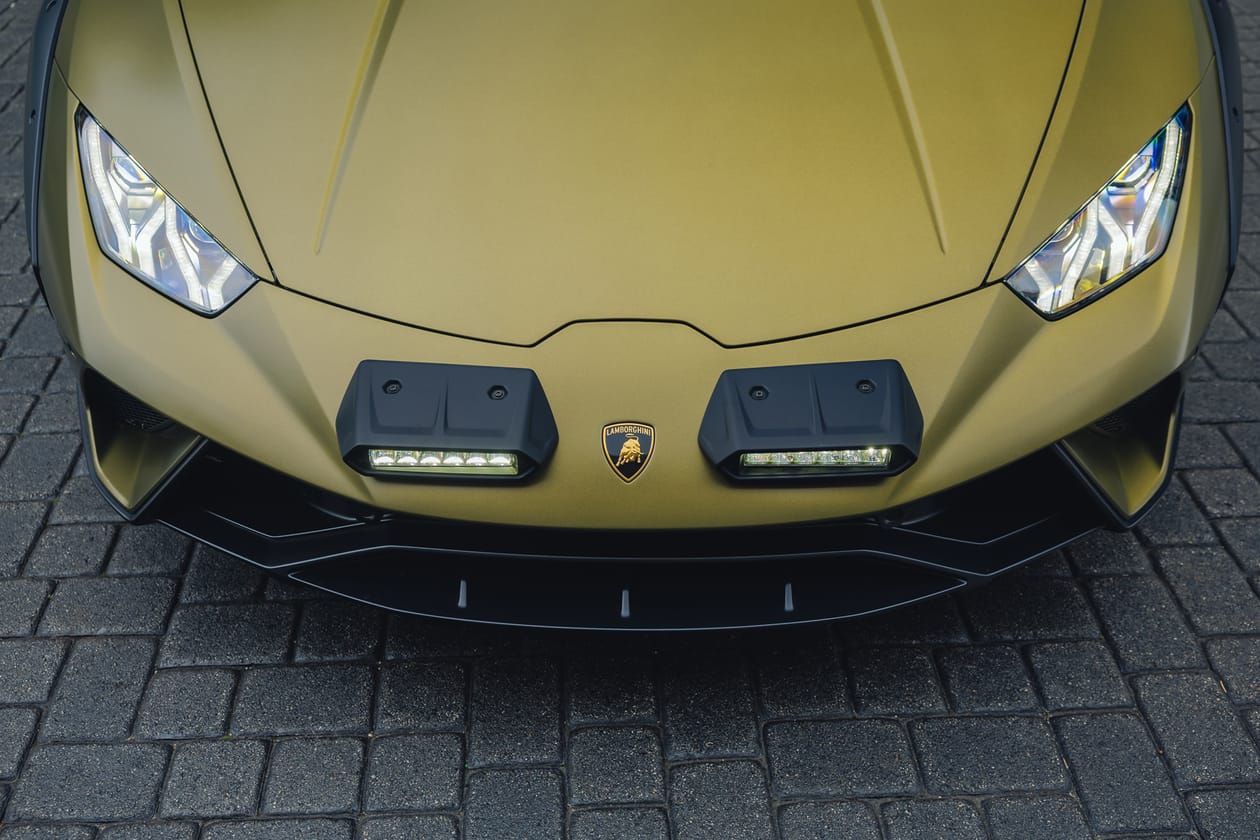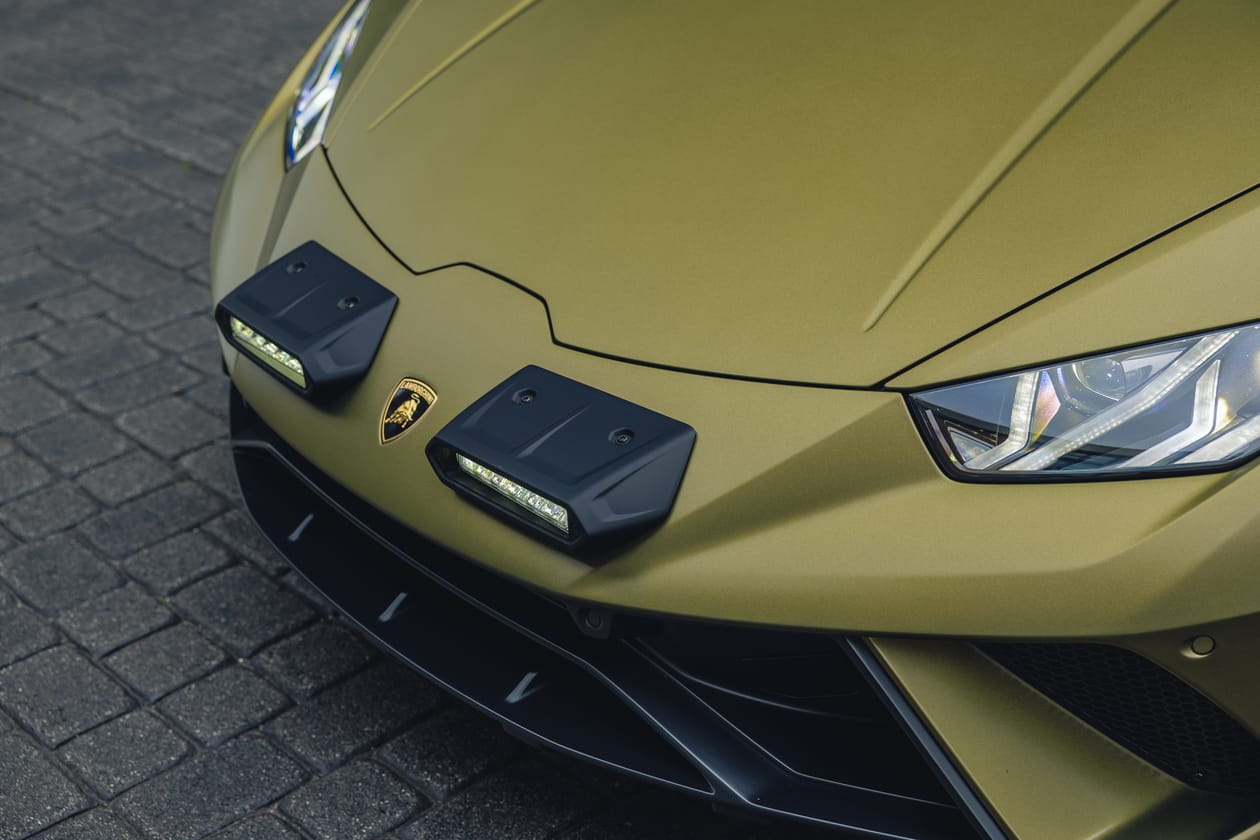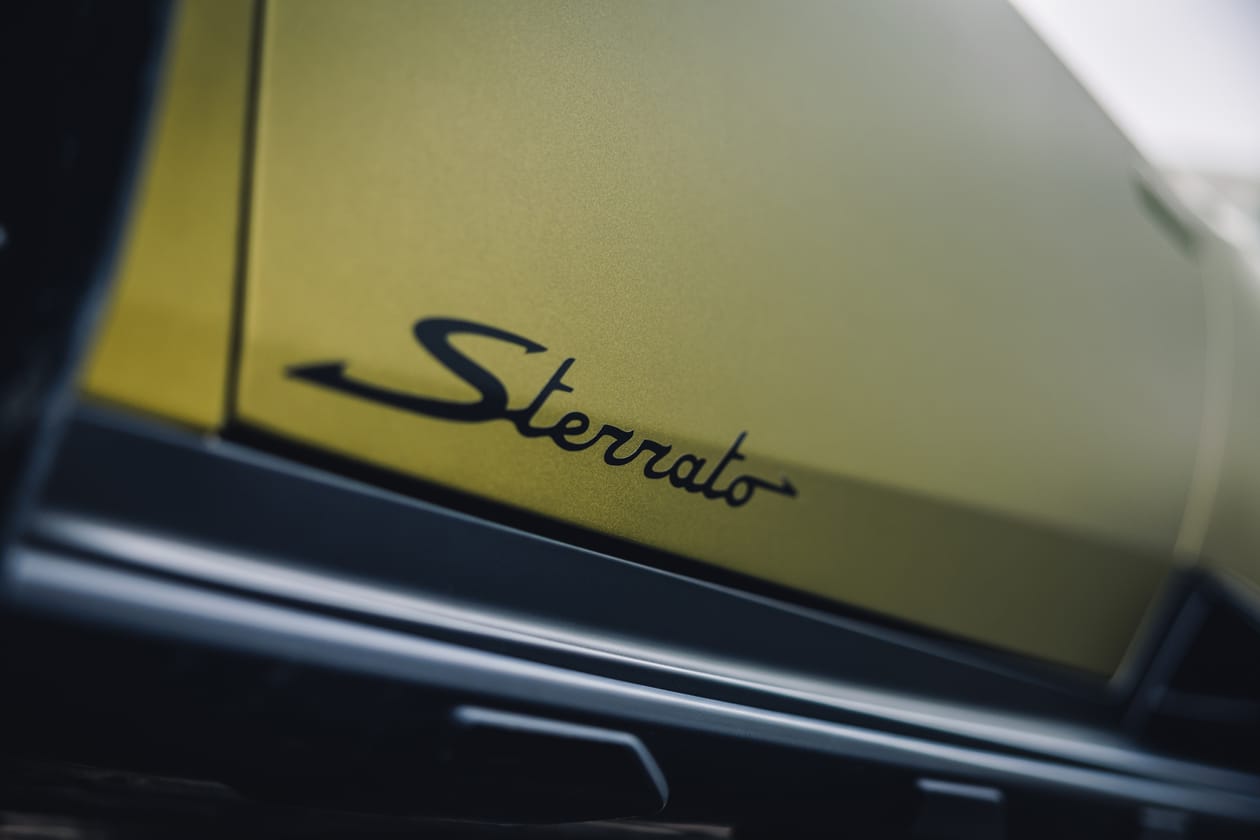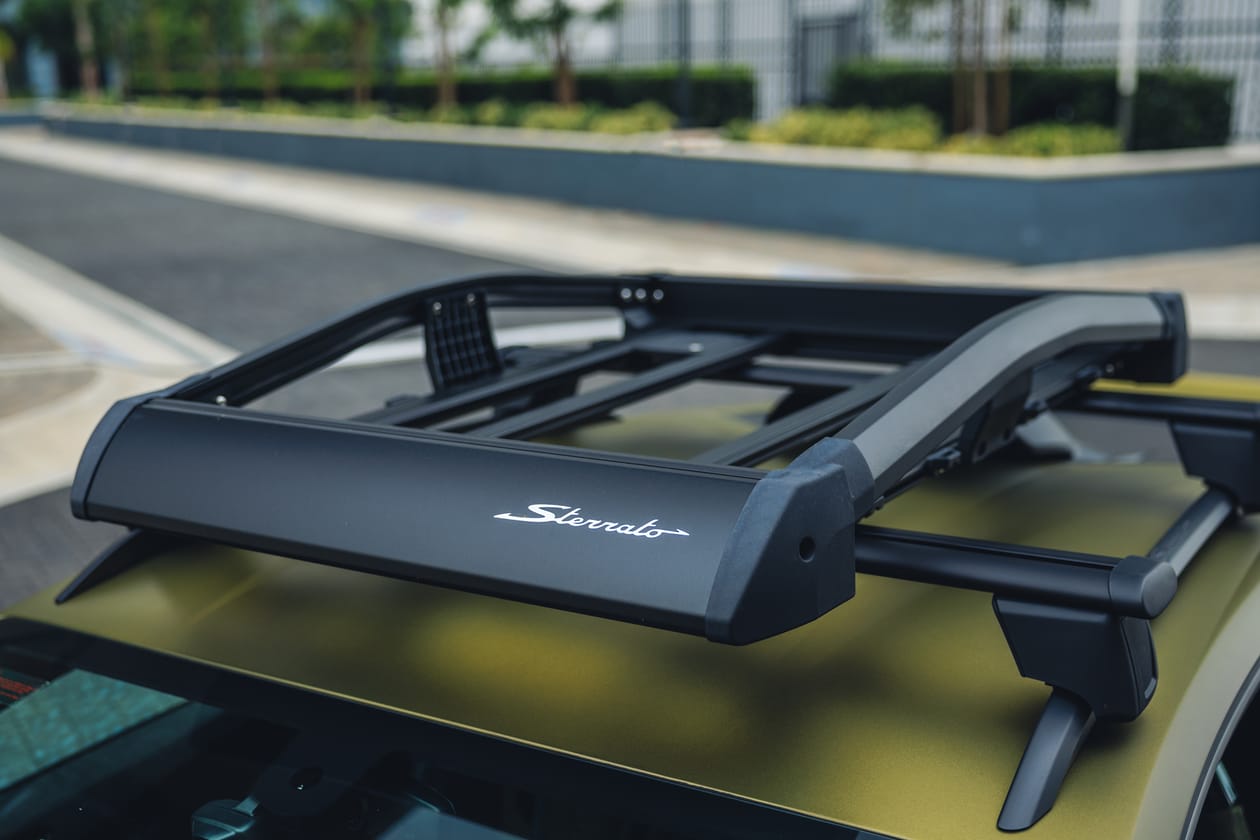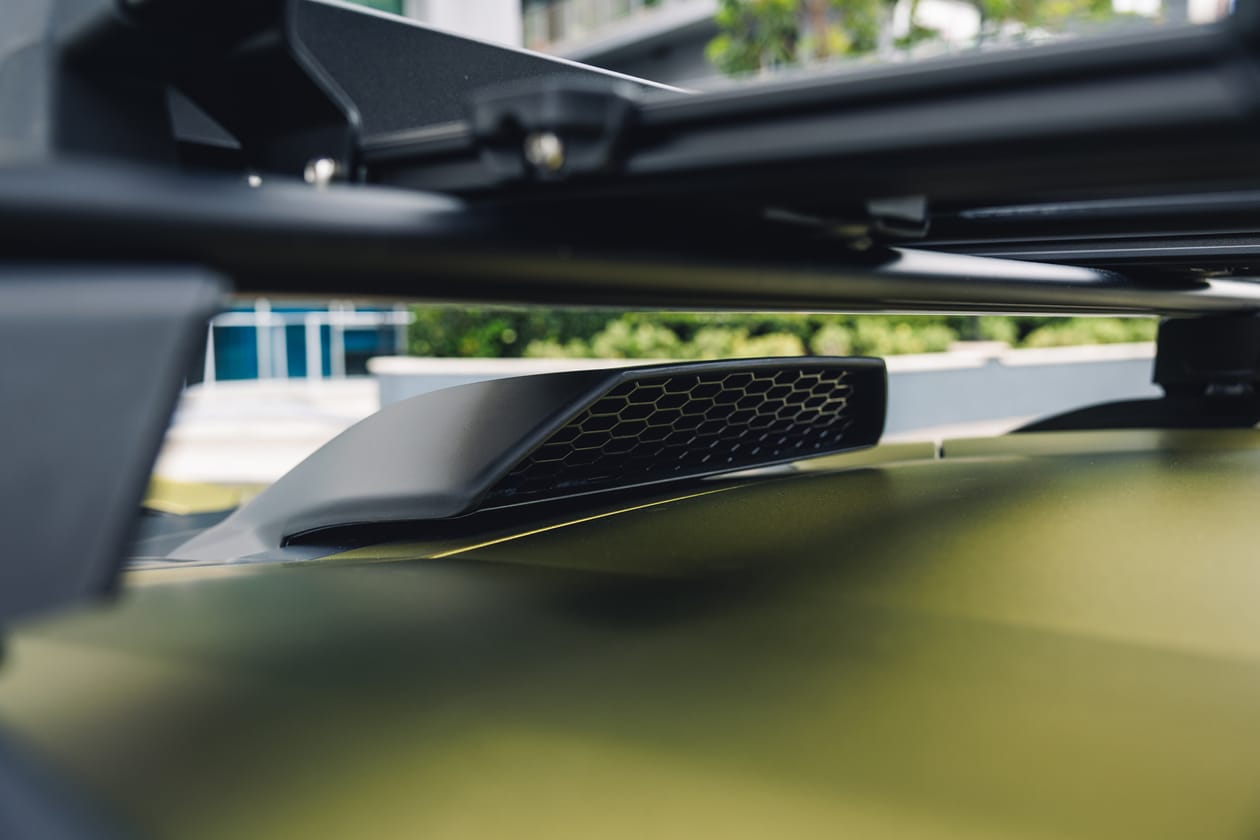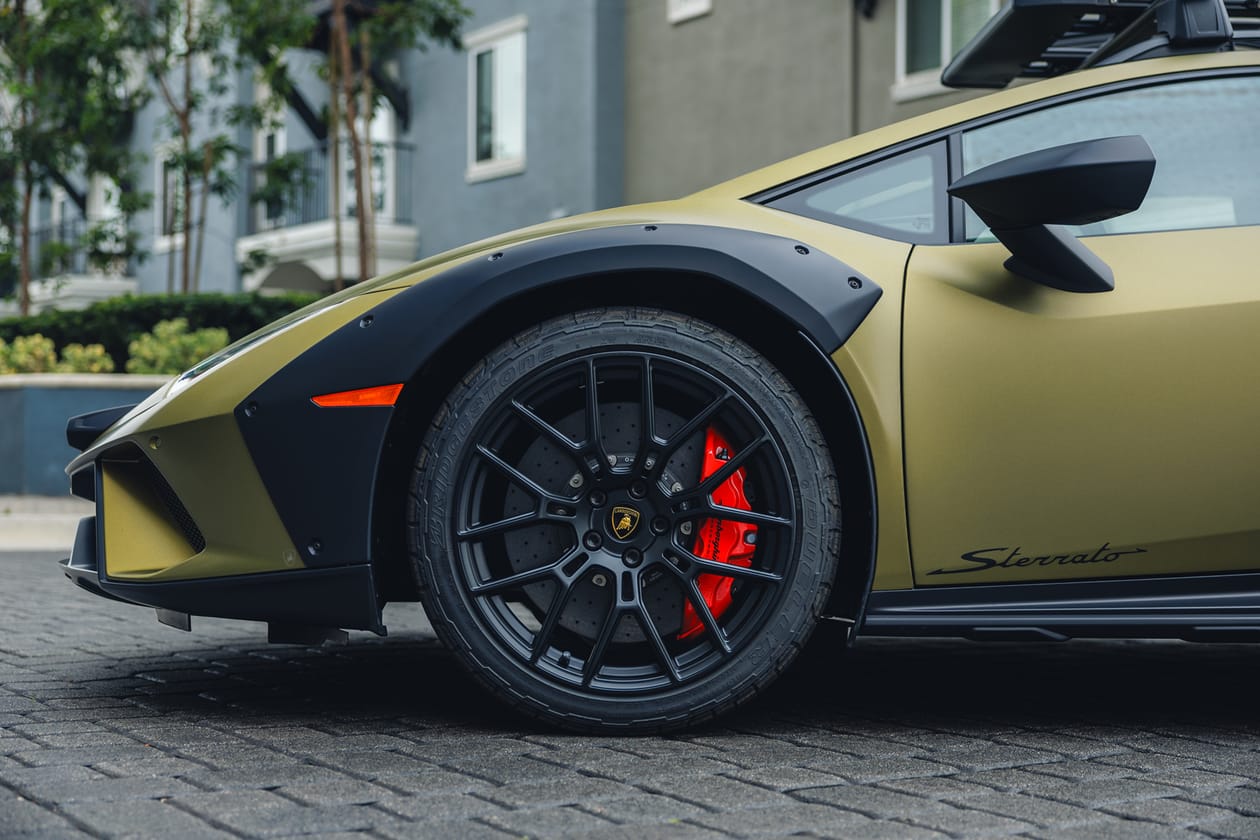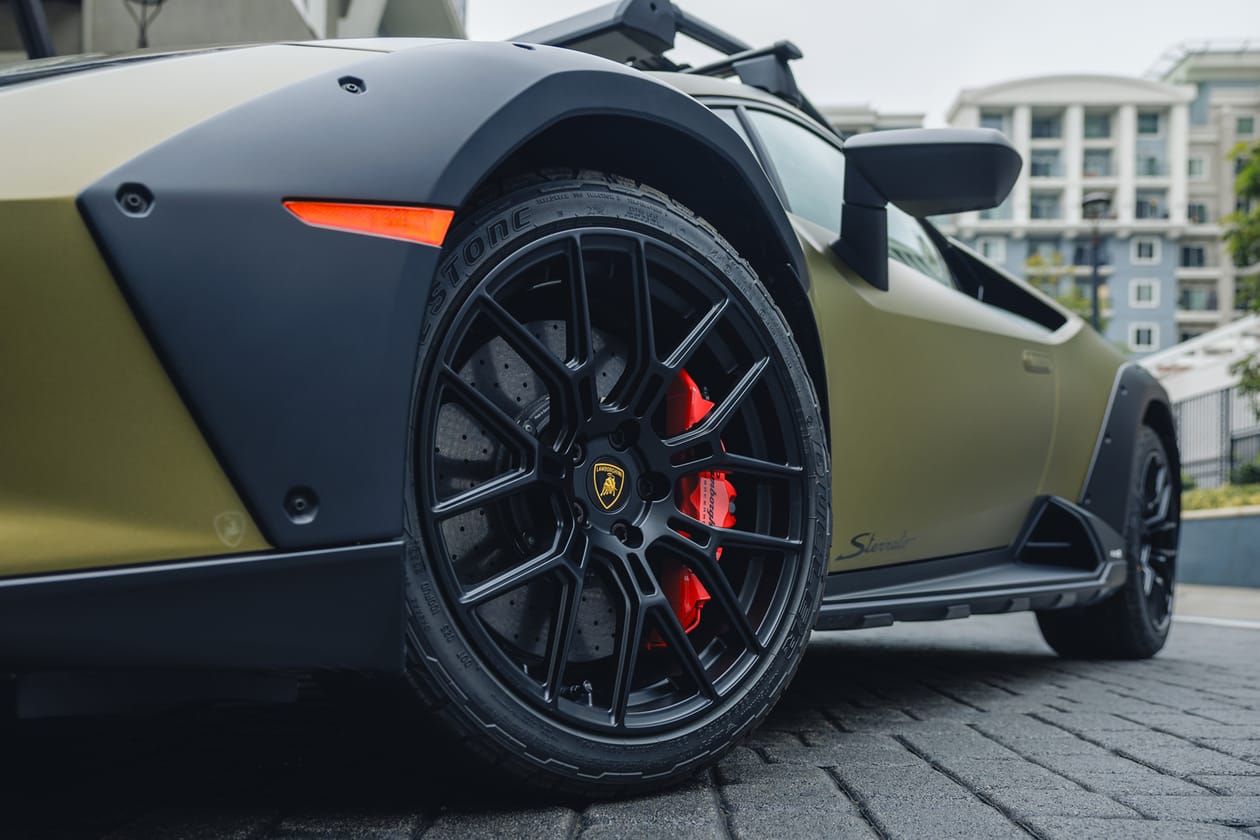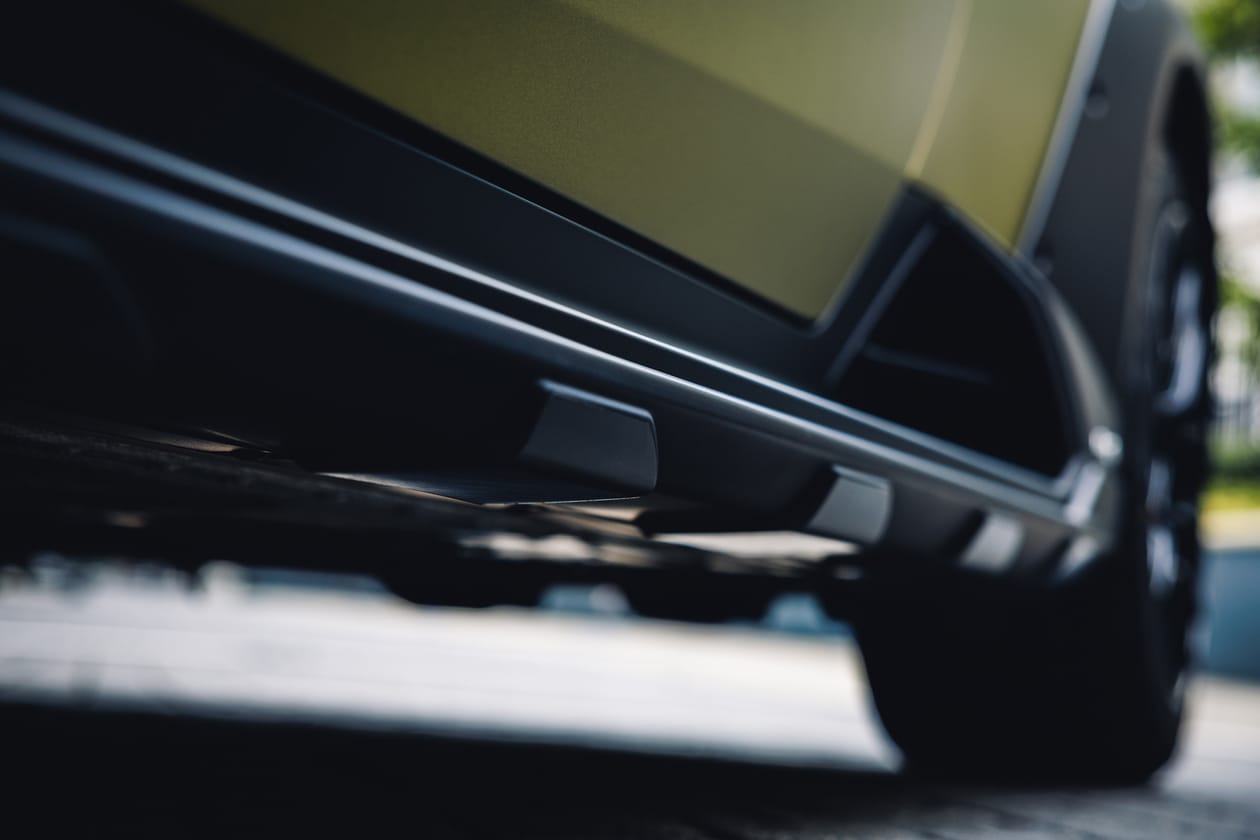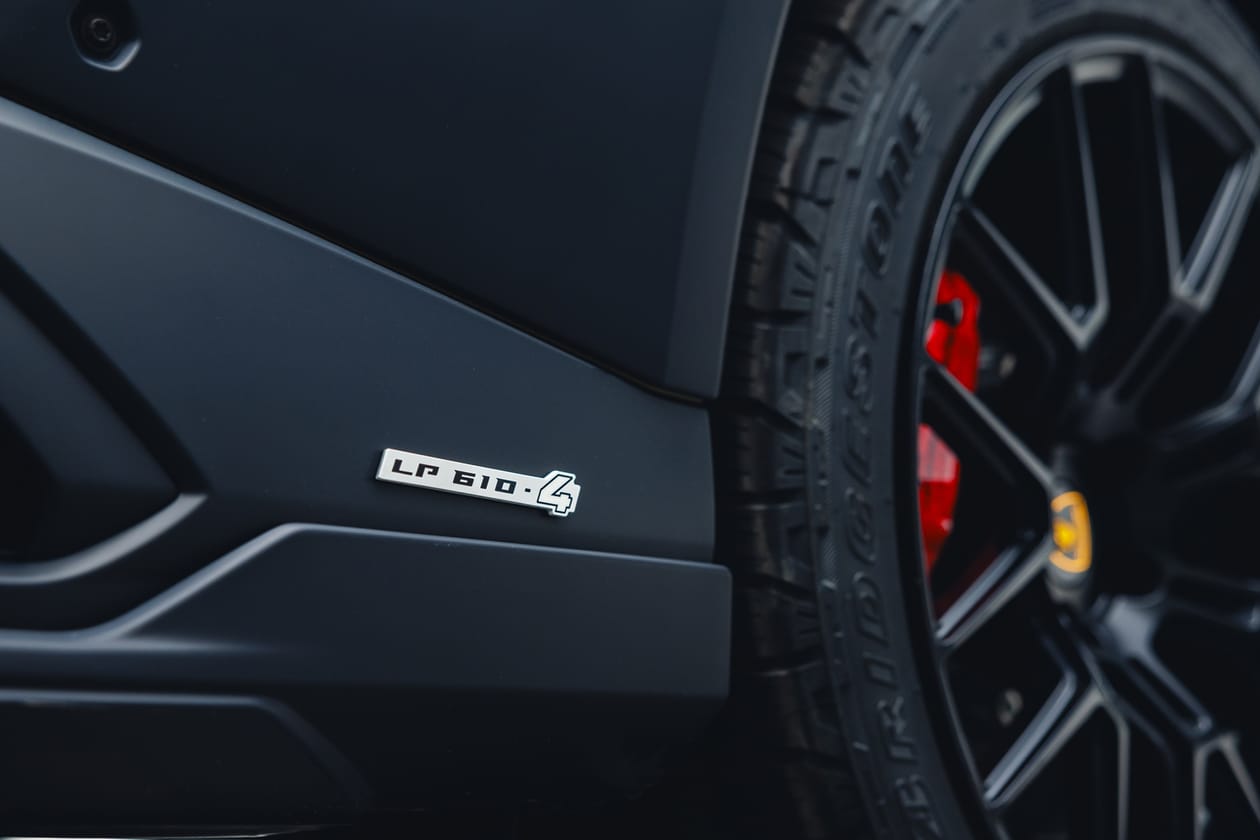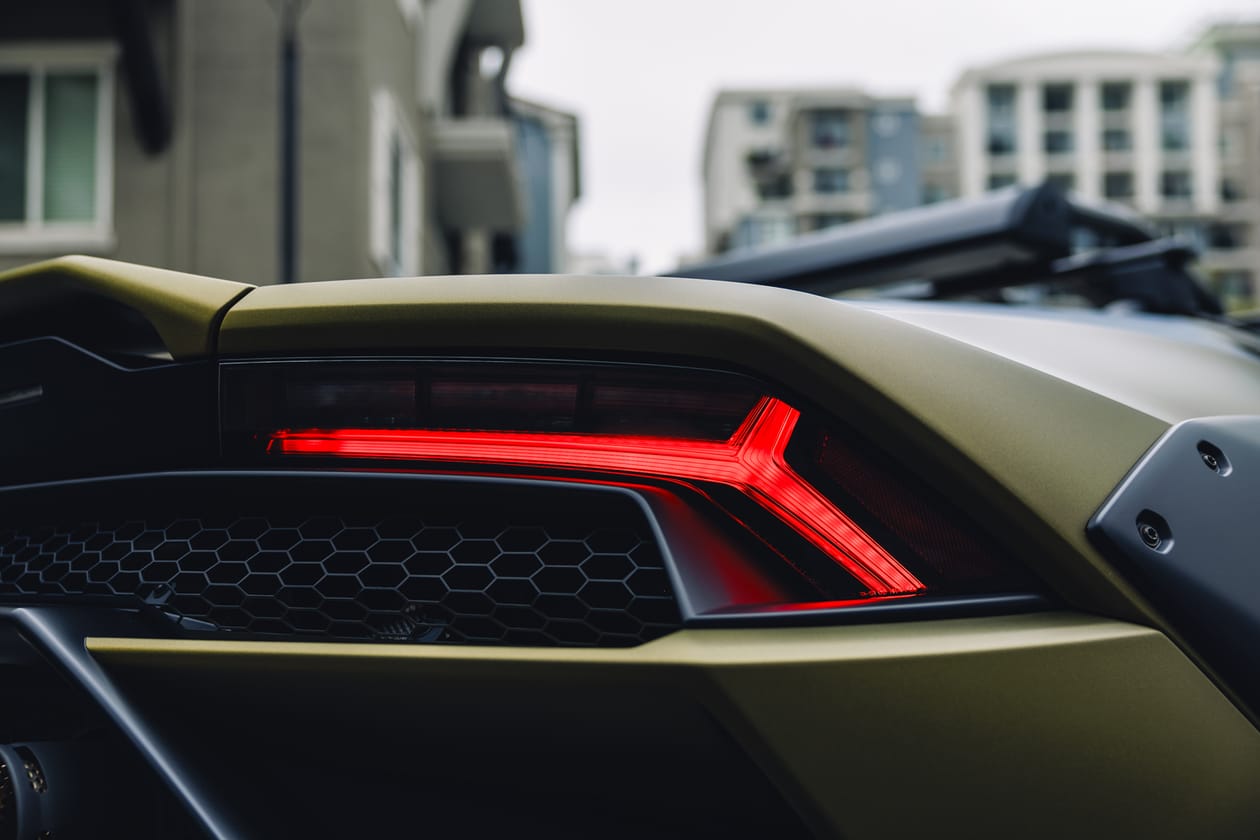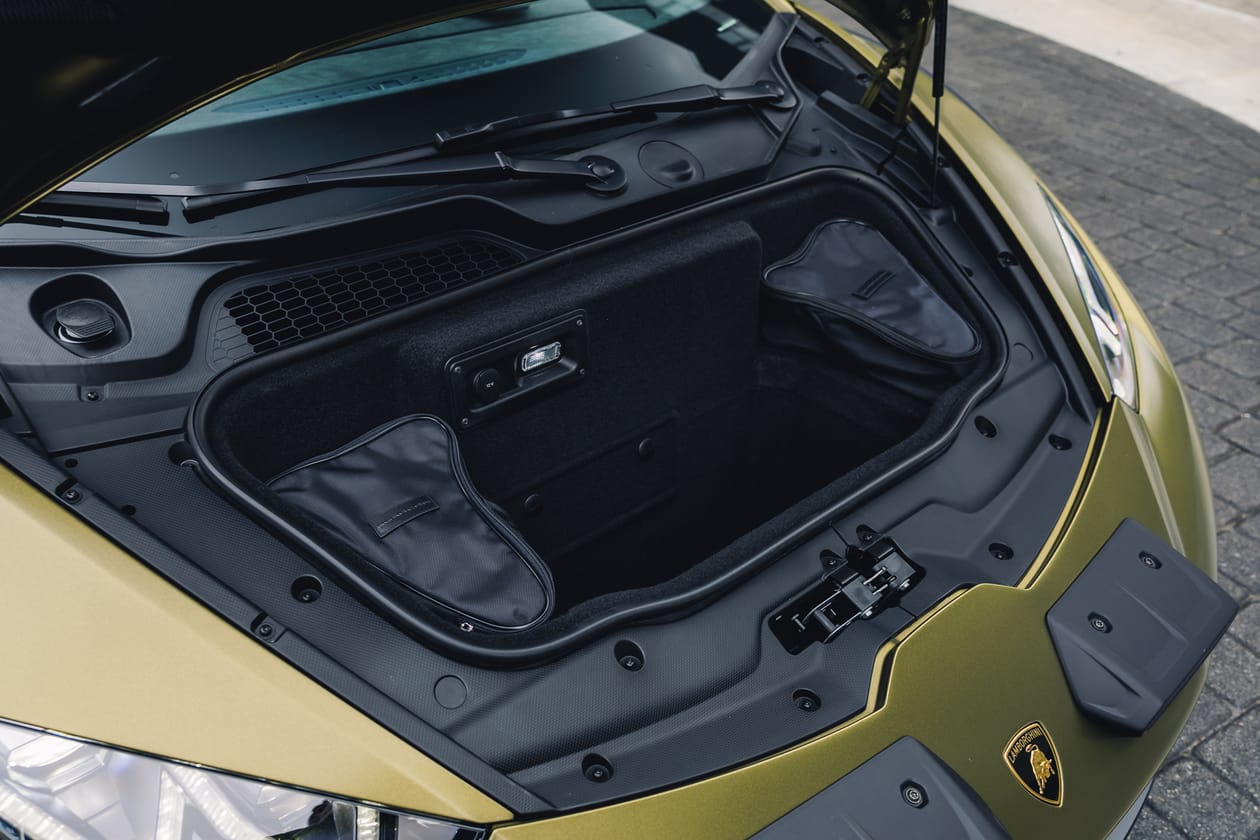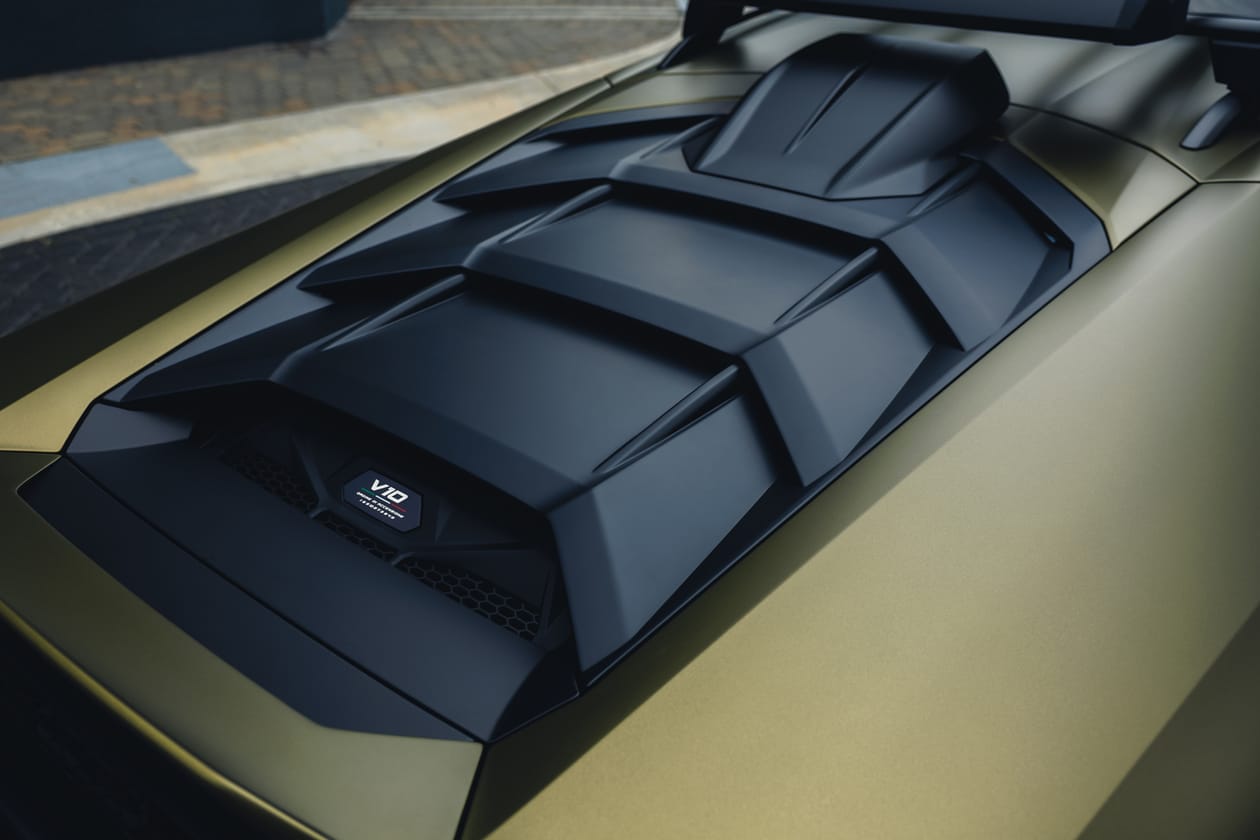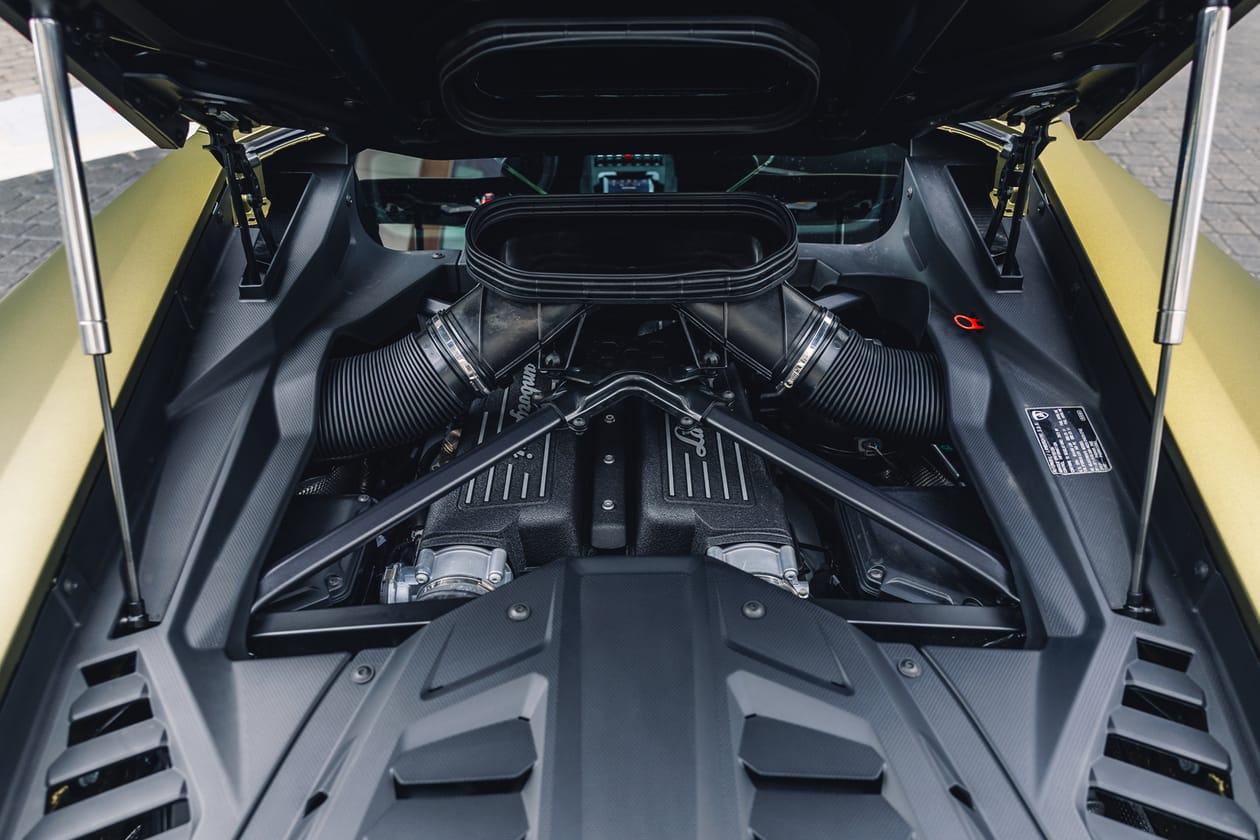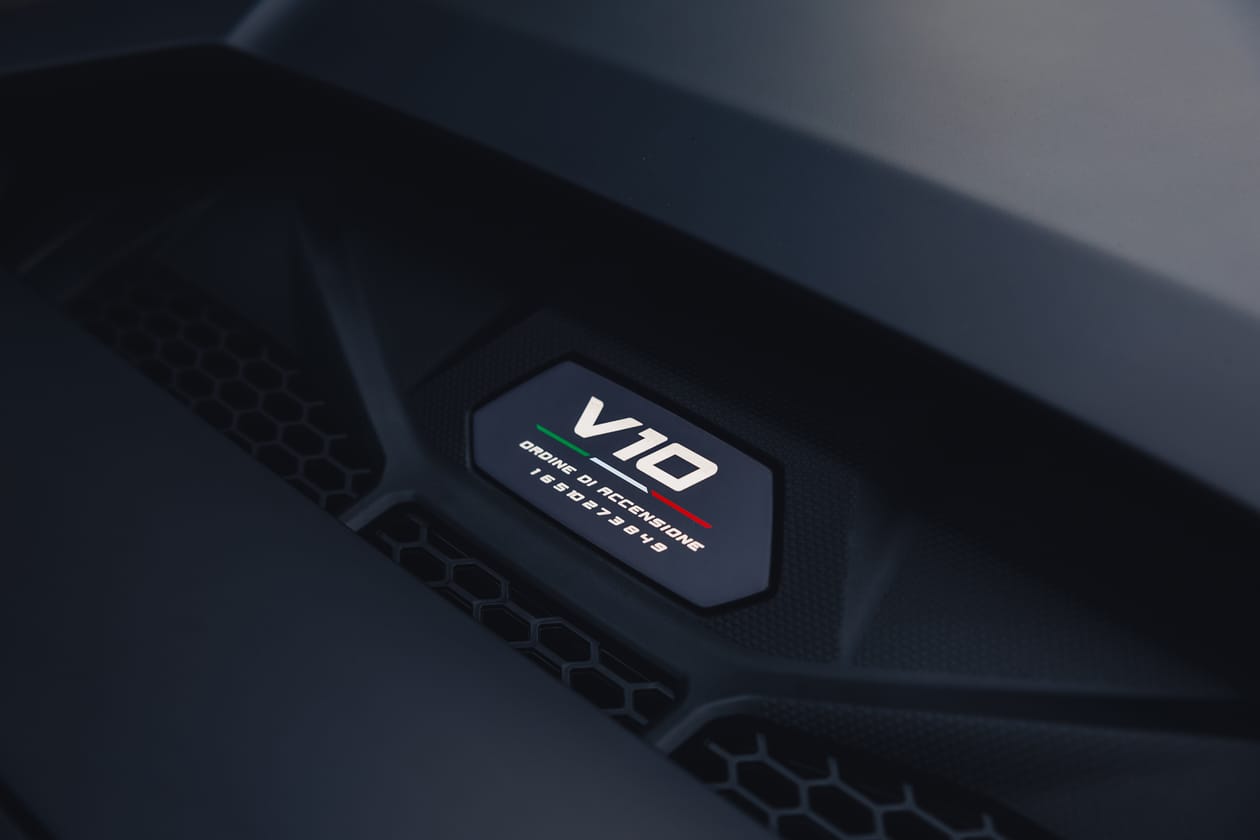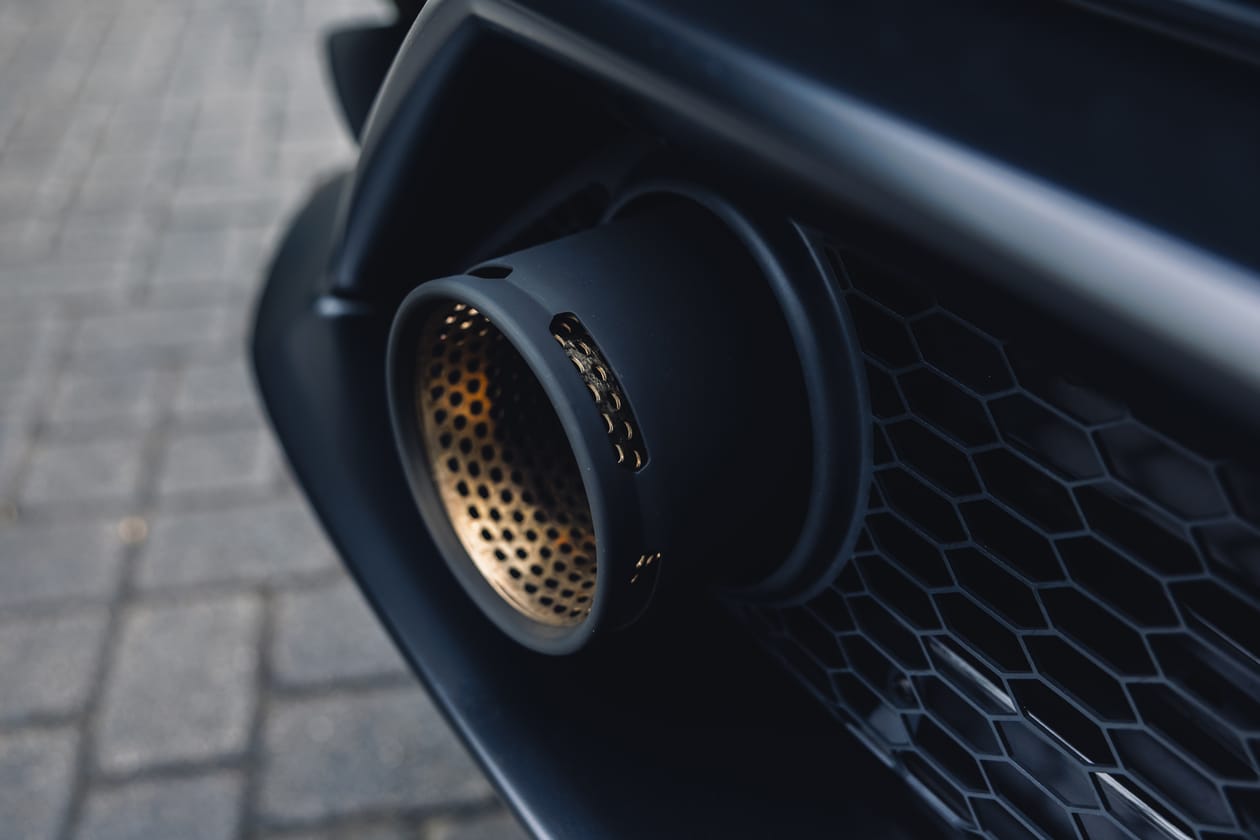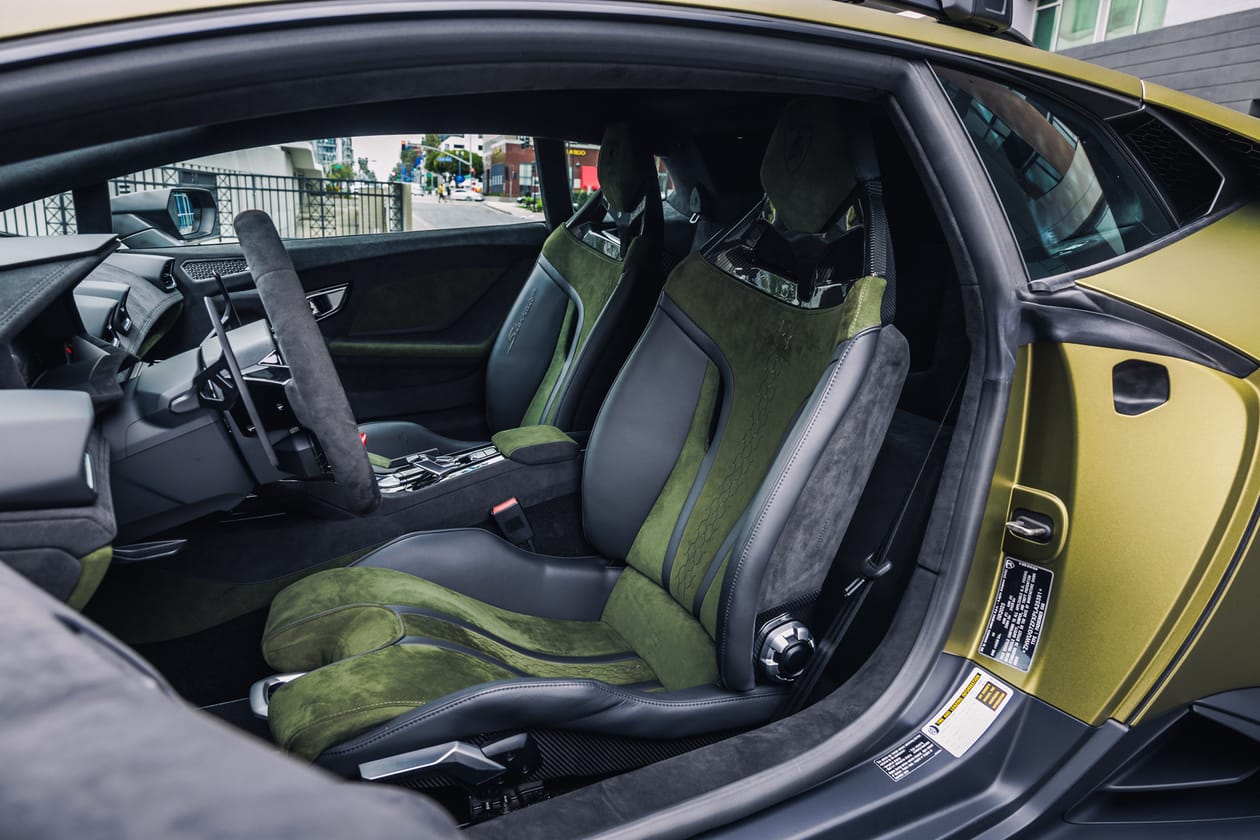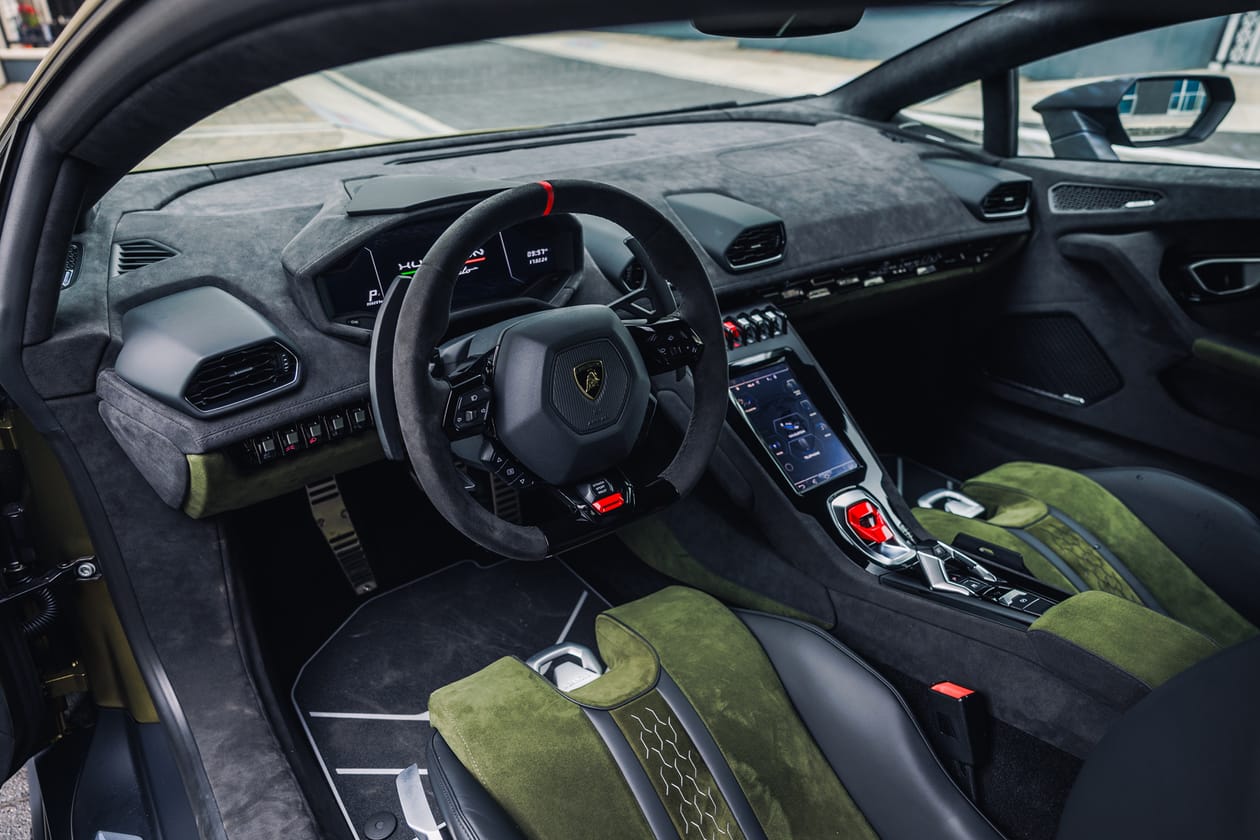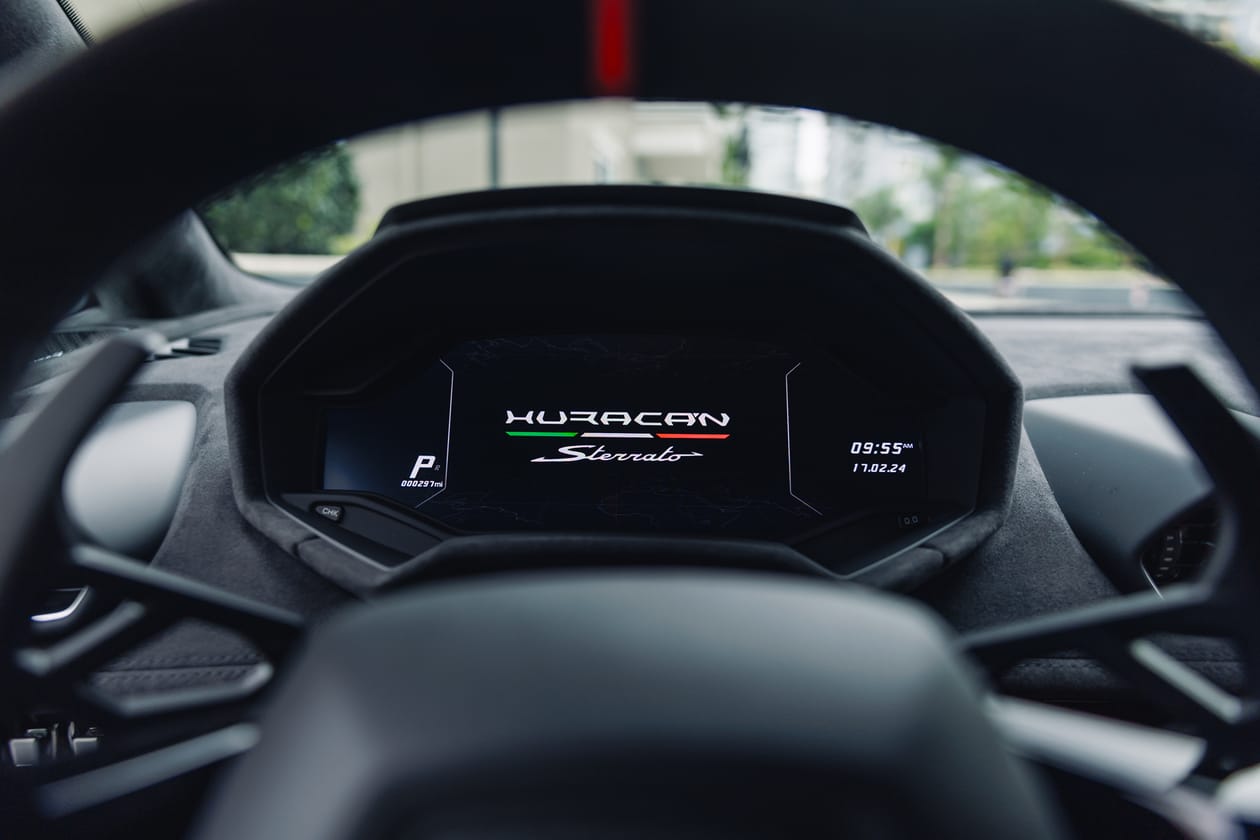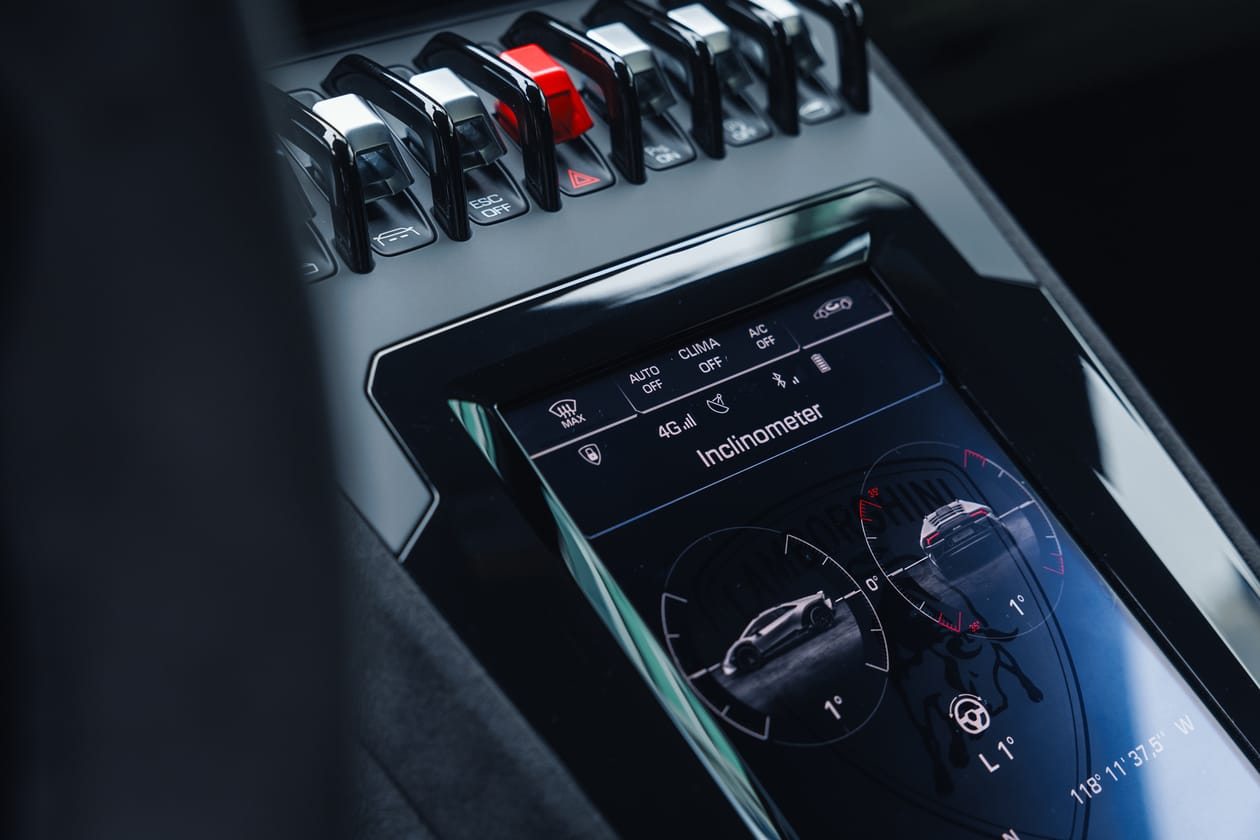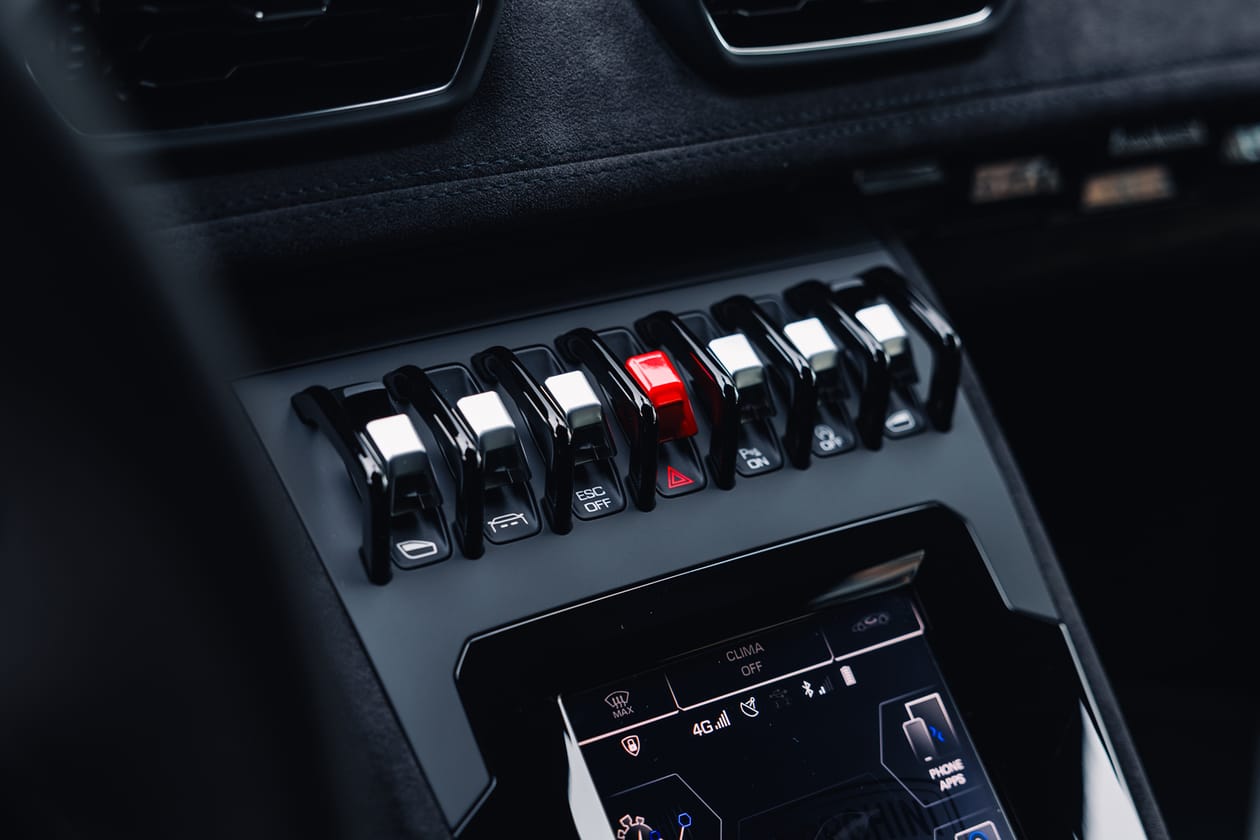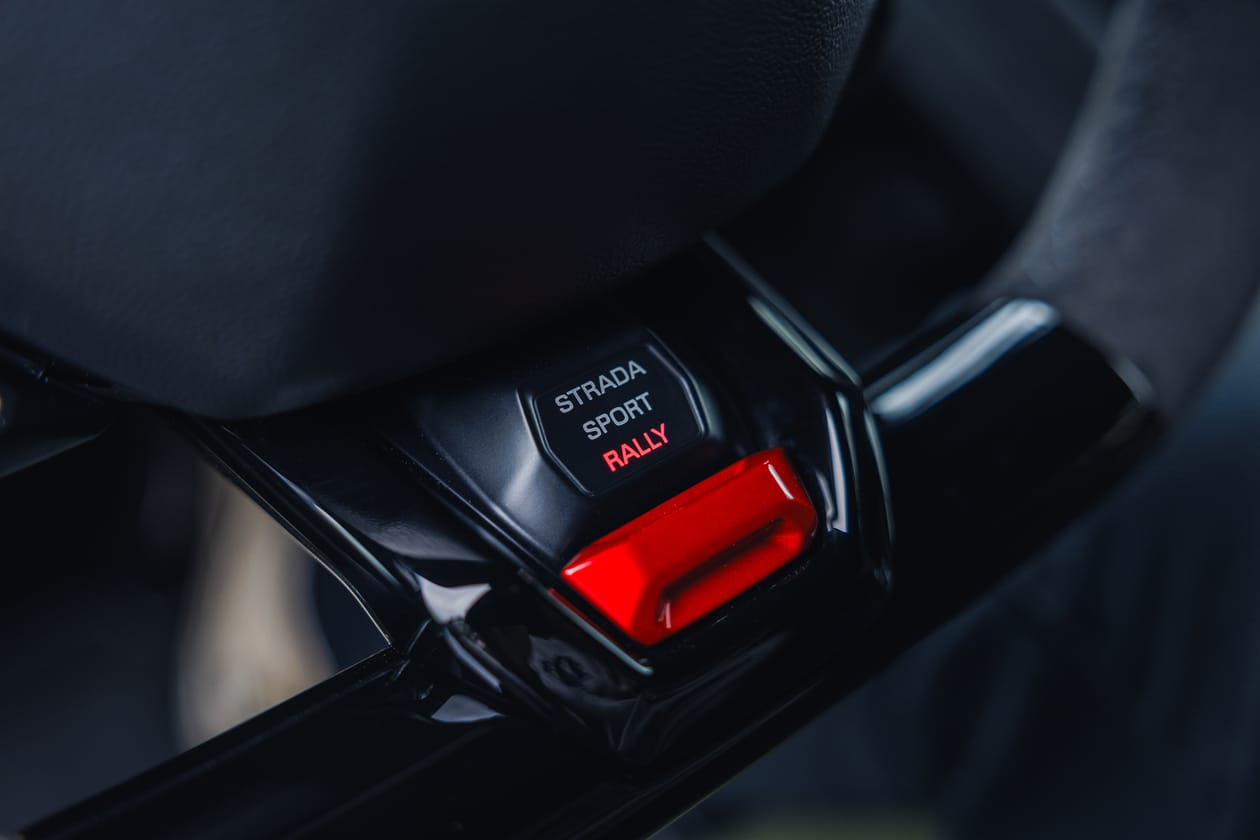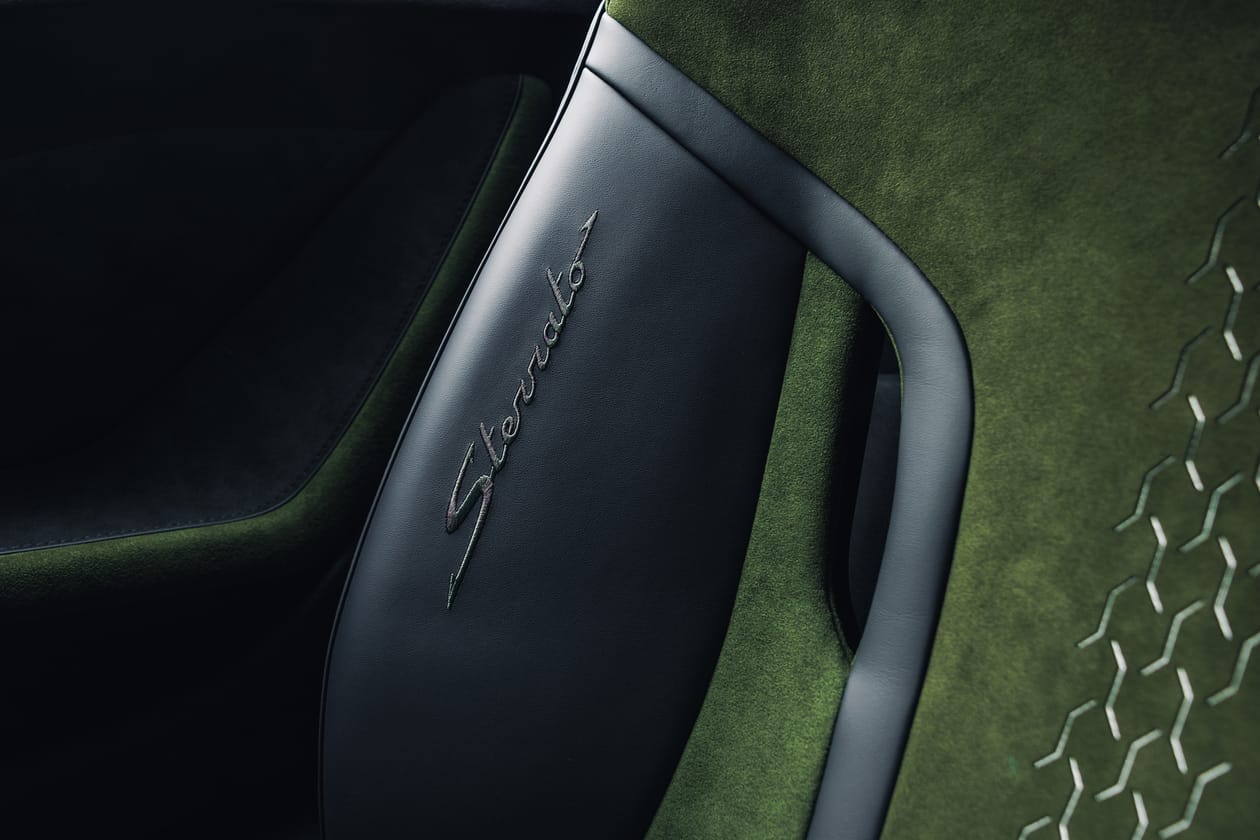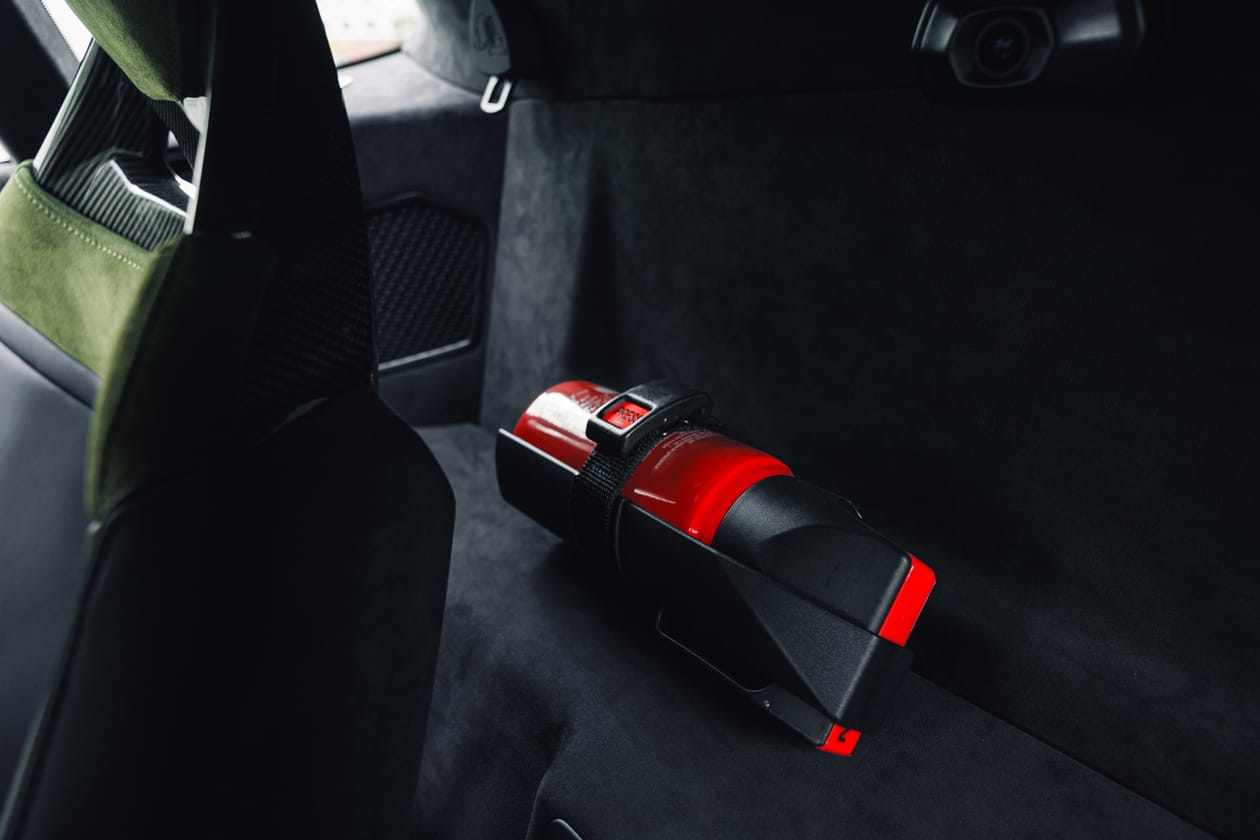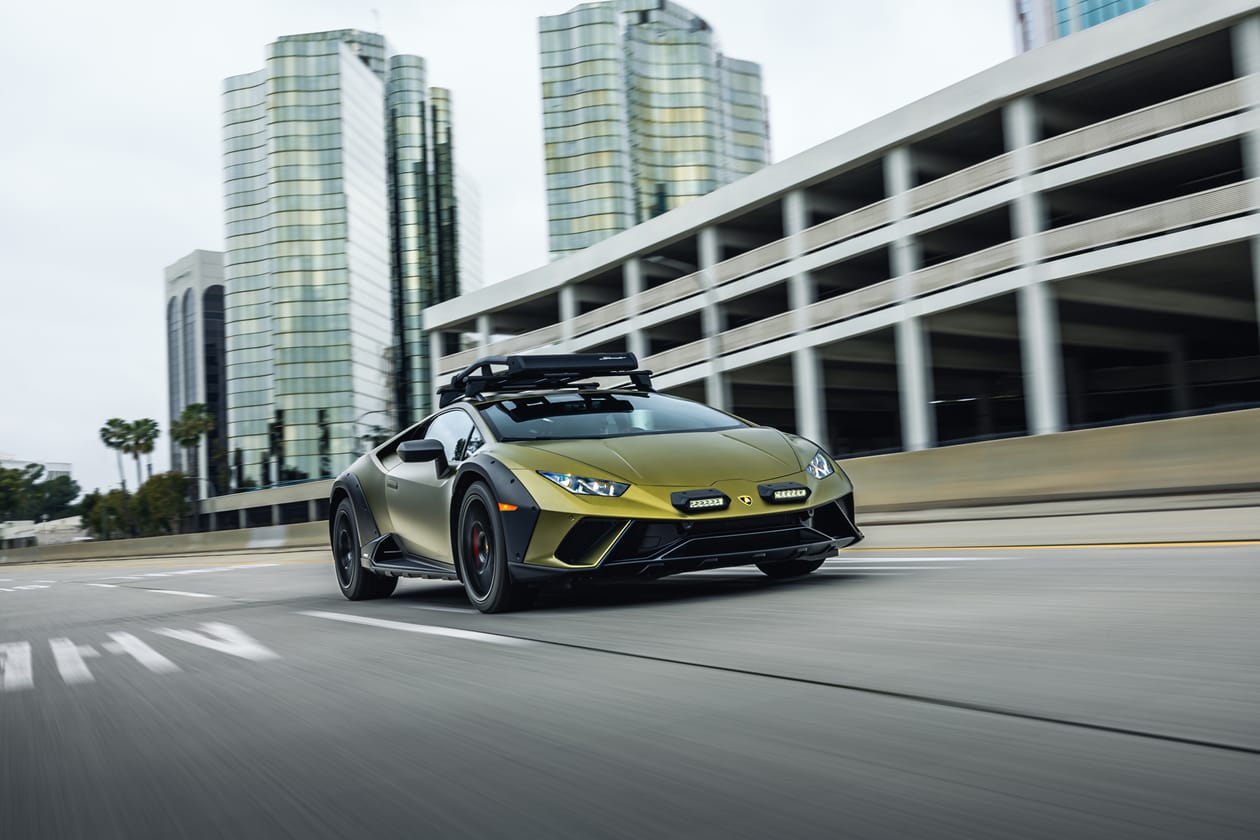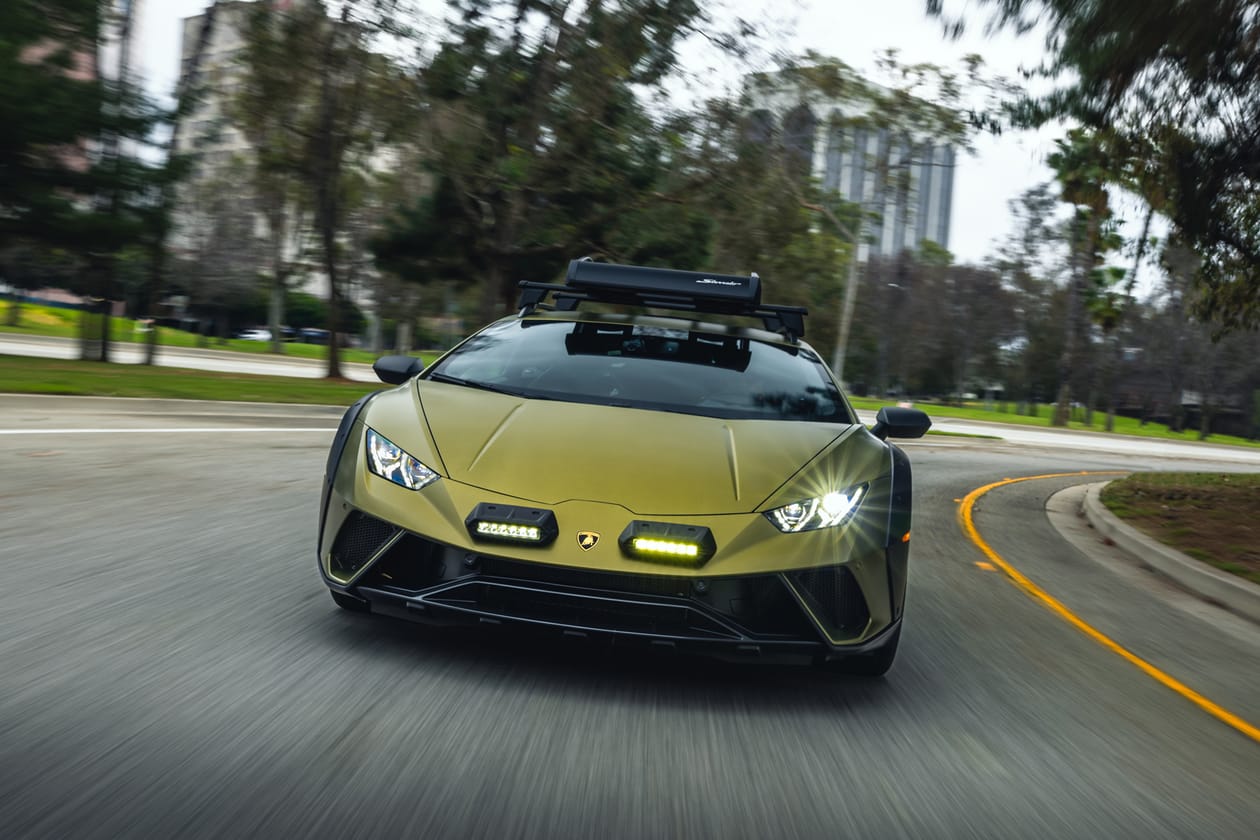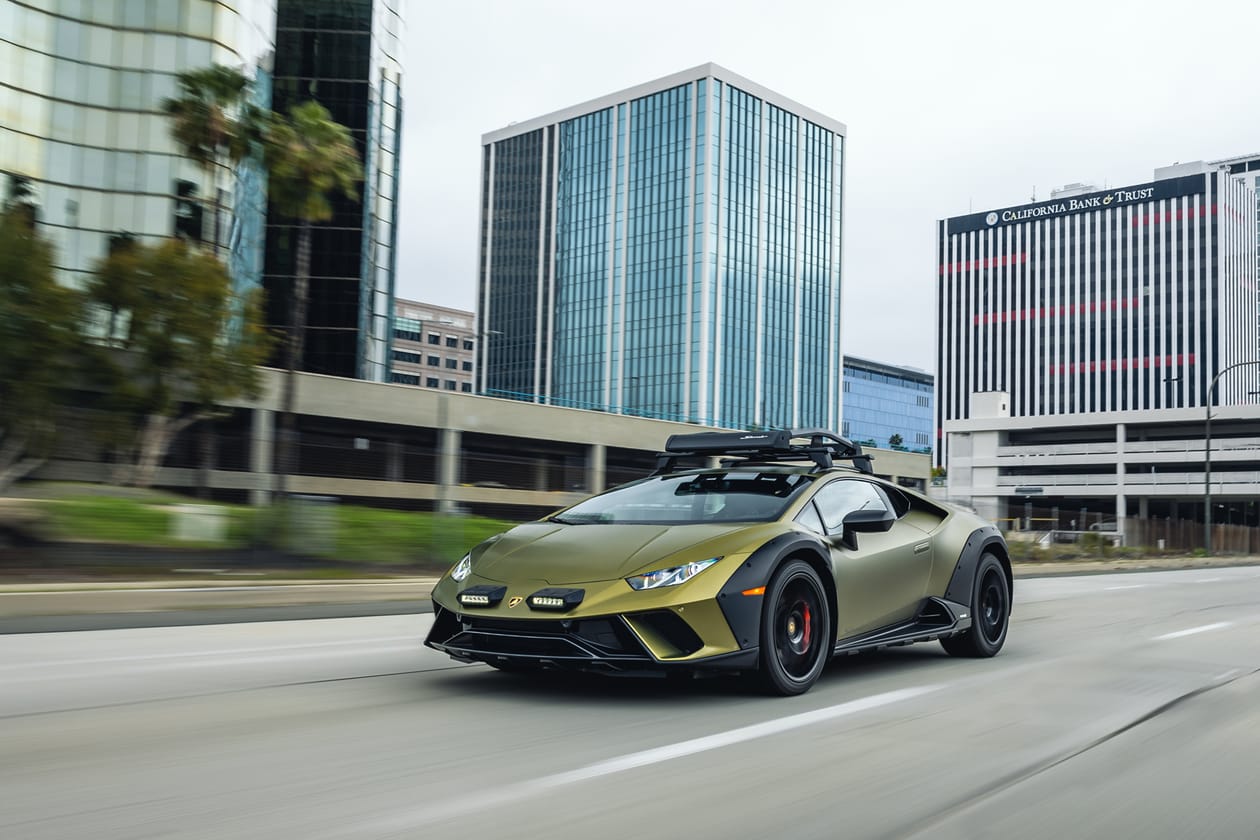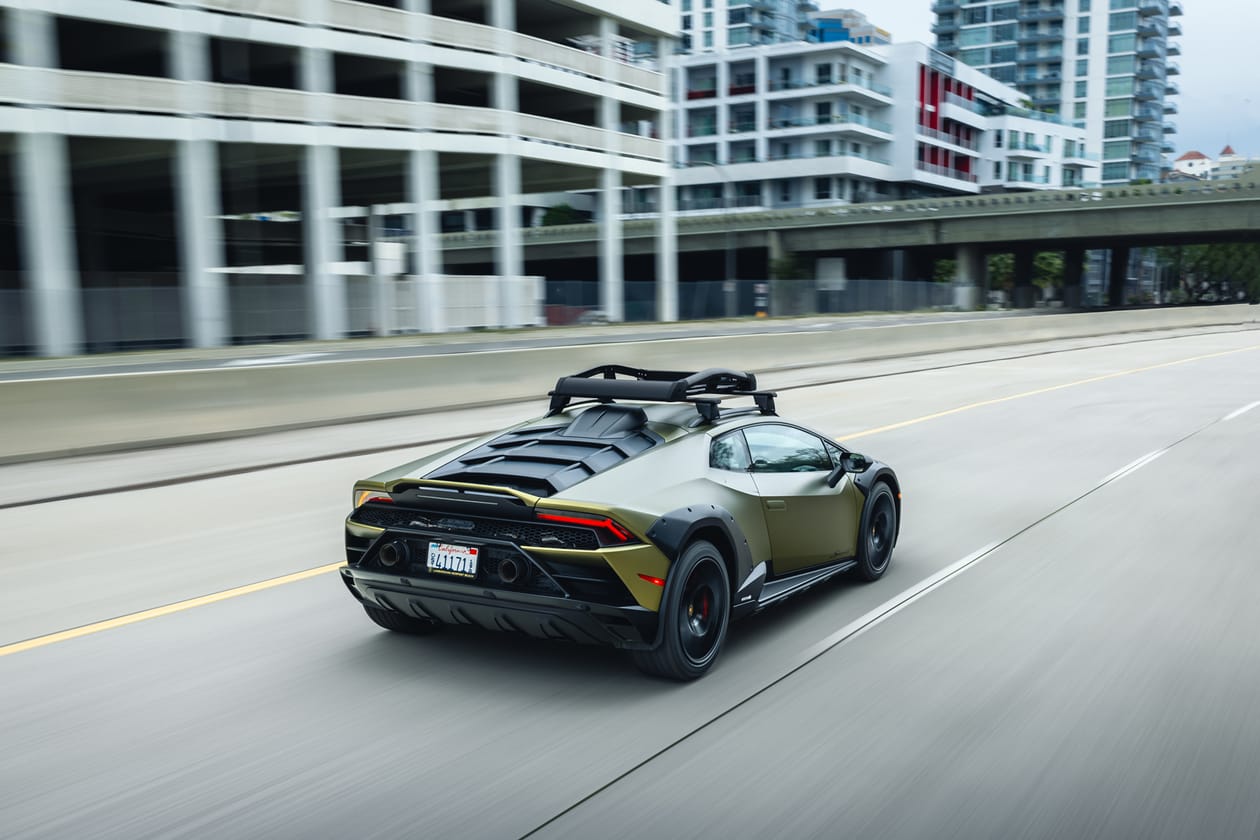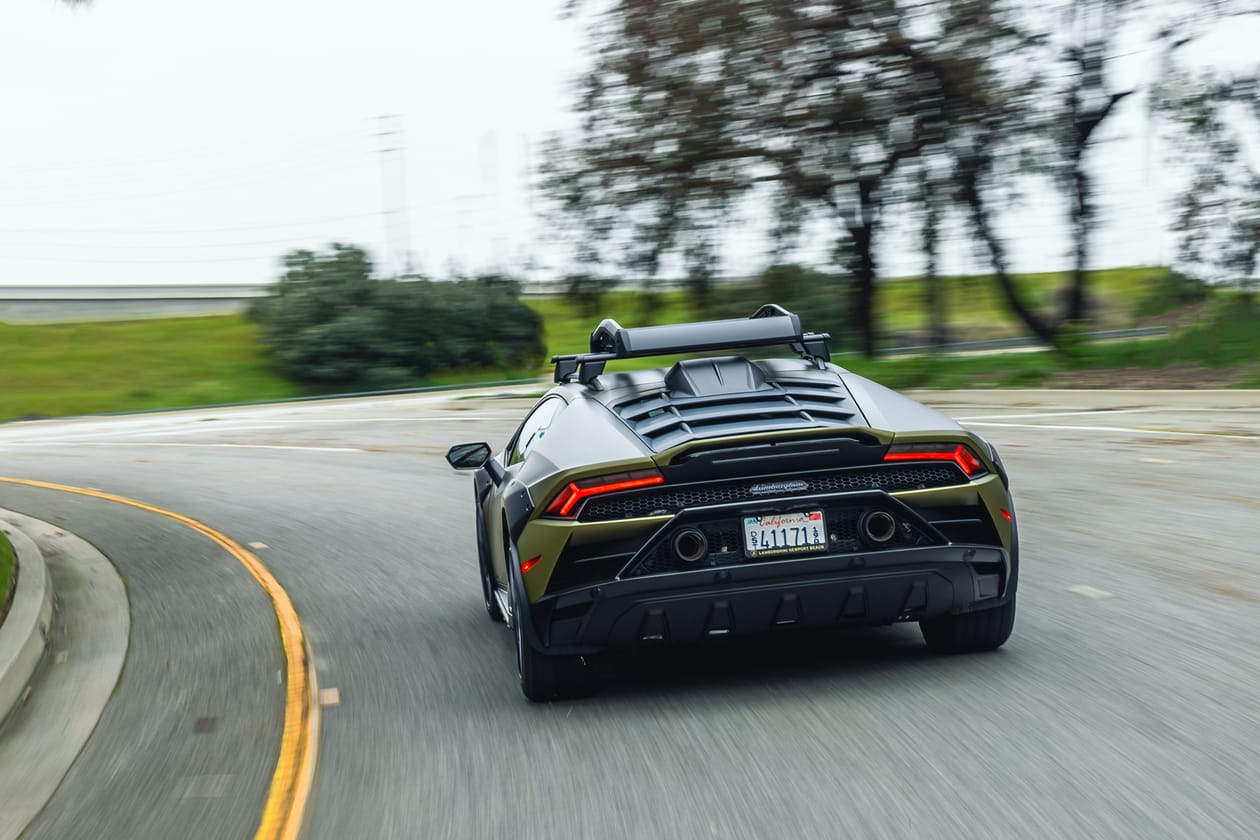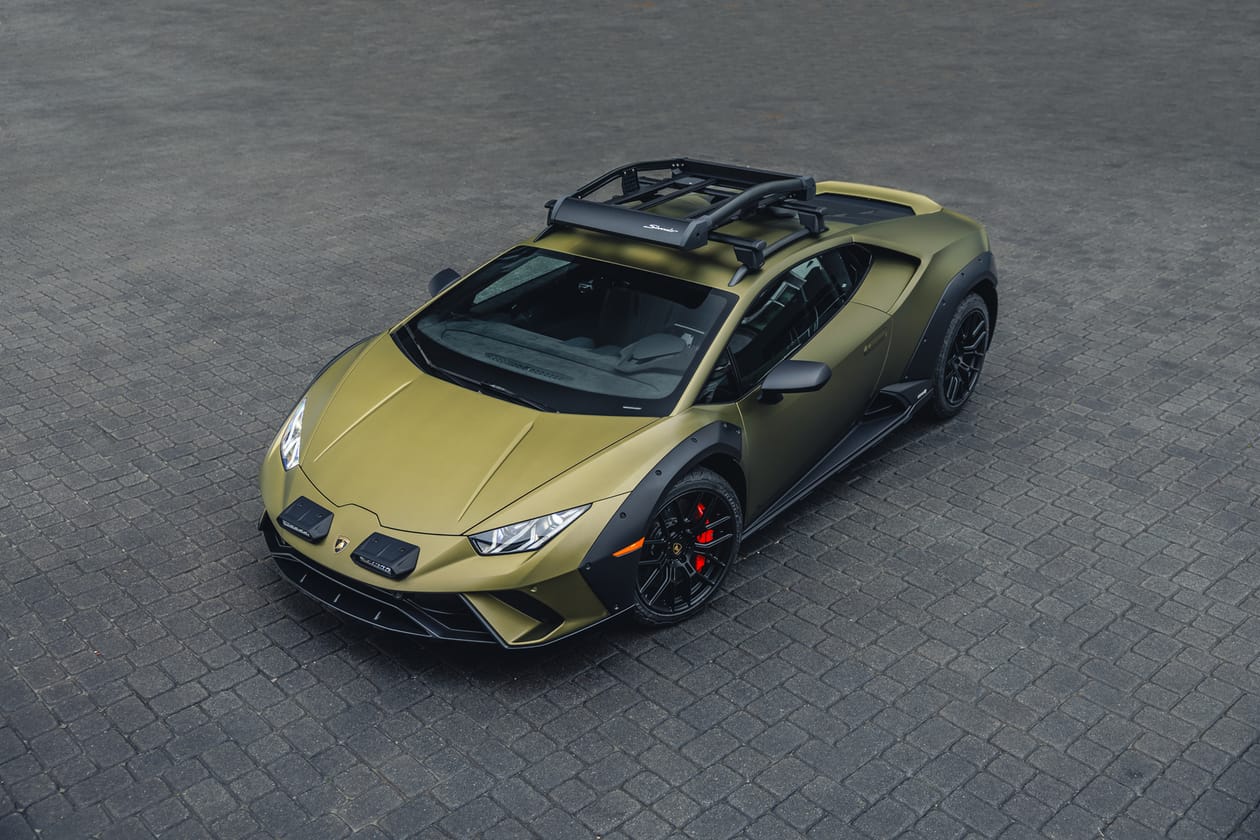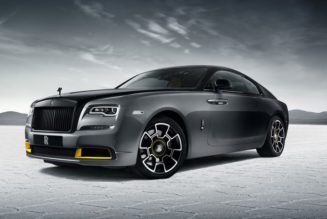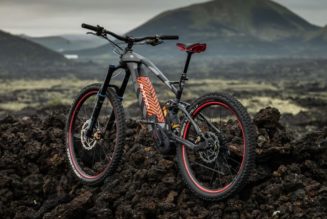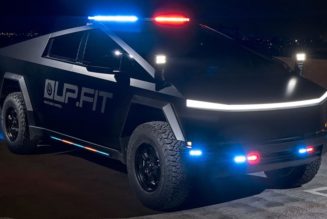You are reading your free article for this month.
Members-only
‘Mad Max of Newport Beach.’
‘Bruce Wayne on a Camping Holiday.’
These were the comparisons that ran through our head the moment we saw the Lamborghini Huracán Sterrato pull up to our SoCal address for review. Its matte green exterior was quite striking even on a dreary Friday morning as we watched the car slowly roll off the delivery trailer. When we got closer to the car, the above analogies hit even harder as we started hearing the stronger exhaust tones up close, all the while noticing the details that make the Sterrato “off-road.” We were getting excited.
However – as we went over the loan agreement, we couldn’t help but notice the bold, yellow highlighted text that was quite literally at the top of the document: “THIS VEHICLE MUST NOT BE DRIVEN OFF-ROAD.” After a few seconds of head-scratching and contemplation of how we were going to do this Test Drive review of an off-road vehicle “on road,” we stepped in and realized it’s not the end of the world. Because at the end of the day, most owners will probably drive it to show off around their neighborhood Cars & Coffee, if they even drive it at all, right?
So how does this “built to go everywhere” vehicle fare on the streets of Orange County where you’ll likely find it? Is it still a Lamborghini, or something much more? We were itching to find out.
Exterior
Let’s start at the looks: the Sterrato is definitely still a Huracán, highly recognizable and loud. Aside from its green exterior, you’ll immediately notice the over fenders in contrasting black plastic that make the stance that much more aggressive. They also give a lot of attention to the lift of the vehicle, which is almost two inches higher than the standard Huracán. The storage rack installed onto our unit gives the sleek roofline a beefier expression, even if it was lacking any of the accessories it’s meant to contain like an external gas tank filler or a spare wheel.
Get closer and you’ll also appreciate the other defining details of the Sterrato, such as the extremely intimidating light pods up front. With the high beams on – they need to be turned on as well – the front end looks devastating, especially during night time or through fog. The rear end houses a deep lower diffuser with chunky ribs, befitting for an off-road vehicle. Those ribs extend around the body as well, lining the side skirts that again accent the car’s lifted height. Did you notice the central air intake mounted under the roof rack? We didn’t at first but obviously couldn’t ignore it once we sat inside – more on this later. And lastly, Bridgestone Dueler all-terrain tires wrap around each 19” Gloss Black rim, with tread so thick you can barely see between their crevices.
In summary, the Sterrato’s exterior does what it’s meant to do – impose a threatening appeal, even if the only off-road ours ever saw was a steep driveway or the speed bumps at South Coast Plaza mall. But that didn’t stop literally everyone at a stop light or at the gas pumps asking ‘what the hell is that.?!’ We tend to gravitate towards cars that are subtler and subjectively gorgeous in its proportions and lines – if this is you and you have a metaphorical radar you’d like to stay under, the Sterrato is definitely not for you. But if you feel the Huracán just isn’t “super” enough of a supercar, then keep reading.
Interior
Inside, things get a bit more confusing. While we understand it’s a fairly resilient material, Alcantara upholstery didn’t make much sense to us in a vehicle that’s meant to be “tough.” Its texture is incredibly smooth and yes, it does come off luxurious in the ethos of a Lamborghini, but just the thought of us getting dirt and mud on the surface of it made us clench our teeth. A full grain, textured leather or – dare we even suggest – something like ripstop or Kevlar could’ve made for a deeper connection to the all-terrain-ness of the Sterrato. With that being said however, the Alcantara was also found on the carbon bucket seats, and those were fantastic. Incredibly supportive and wildly comfortable, they were our favorite parts of the inside of the Sterrato.
You’ll also find your standard fare of switches and buttons as well as the touchscreen infotainment, all of which are pretty much the same as you’d find across the other Huracán models, so none of that is bespoke to the Sterrato really. What is exclusive to the Sterrato though are the smaller details – aluminum floor mats give off a utility feel, while the “Rally” mode that’s an actual re-map of the car’s engine performance on the steering wheel-mounted mode selector reminds you of what you’re in. Ours did not come with a four-point harness but we imagine that would’ve been a nice touch for someone actually off-roading in this.
Just the thought of us getting dirt and mud on the surface of [the Alcantara interior] made us clench our teeth.
Back to what we mentioned about the air intake mounted on the roof – its snorkel feeds air into the mid-mounted engine, and is placed there to avoid waterlocking the engine should you find yourself in deep water. This feature was perfect for that off-road vibe and serves a great purpose, but it also completely removed any rear visibility from the rearview mirror, making it a bit difficult to drive in our honest opinion. While the extra-wide side mirrors helped, there were a few times when we had to guess if there was someone behind us about to overtake. A digital rearview mirror would’ve solved this problem easy.
So our confusion on the interior is largely based on this rationale: for a Huracán to look this extreme on the outside, couldn’t the inside also have been above-and-beyond in terms of making this thing a real all-terrain model? How about ergonomically-placed extra padding for the driver and passenger, more rugged side sills, locking closures at the cup holders so your drinks don’t go flying around, or even a double-bubble roof for people to wear helmets? In our opinion these things would’ve really drove the off-road-capability feeling home.
The Drive
Ok so now we get to the fun part… right? Well, yes and no.
We’ll be upfront – we were highly disappointed that we couldn’t take the Sterrato off-road. But trying to be rational and understanding, we figured we’d do this review based on the idea that you may not have access to off-road terrain; much is the case if you live in Irvine or Newport Beach, as a lot of Lamborghini owners probably do. So how is it on the 405, or up and down Jamboree Road during lunch hour on a weekday?
Let’s start with the power. The 5.2L naturally-aspirated V10 pumps out 601 horsepower and 413 lb-ft of torque through a 7-speed dual clutch transmission – regardless of its added “tough” bits, it certainly felt like a Lamborghini to us. And the exhaust note was perfection – ultra deep and very grumbly on the overrun, but quite subtle when driving around in Strada (“Street” or Normal mode) if you didn’t want to be “that guy” at 7 a.m. in the morning. We found areas near us to test the 0-60 of 3.4 seconds and the closest we got was 3.7s, but nevertheless it was exhilarating.
The car surprisingly cornered pretty flat when we were gunning it on on-ramps, but the height did lead to some nose diving when slamming on the carbon ceramic brakes, but that’s to be expected with the lift. We also didn’t feel too high up regardless of its height – this was a pleasant surprise because we still felt like we were in a supercar and not an “SUV” like the Urus. Shifting from the paddles also were a cinch and we enjoyed every time we flicked it down, as the transmission is lightning quick and the revs matched perfectly, with zero loss of momentum.
The 5.2L naturally-aspirated V10 pumped out 600 horsepower and 413 lb-ft of torque – regardless of its added “tough” bits, it certainly felt like a Lamborghini.
Now for the letdowns, and there’s mainly one: the noise. Thanks to the all-terrain chunky tires underneath, and the roof rack and the air intake above our heads, the Sterrato was deafening. There were a few times when we had argument-level conversations in the cabin before we had to switch it to “Normal” mode to at least dull the engine drone a bit to finish our sentences. The dual-pane windows helped separate the noise a little from our doors, but it was the cabin where we felt like we were trapped in a closet of a factory warehouse. When driving alone it’s negligible or when the excellent stereo was playing, but otherwise don’t expect any deep conversations to be held in this.
Other minor disappointments were small, such as the Piano Black plastic interior that were absolutely covered in fingerprints, climate controls nestled in touchscreen menus, and a driver-side door that – perhaps through use and abuse of our loaner – had a slight misalignment “kink” that bothered us every time we’d open and close the door.
Nevertheless, the Huracán Sterrato conquered the pavement, the parking lots, the parkways and the speed bumps. Then again, the Huracán EVO, STO and even the Urus could’ve done these things equally as well, if not even better.
Who Is It For?
Which brings us to our original point: who is going to buy a Huracán Sterrato, and where does it really belong? If it’s meant to be driven off-road, why the plush, luxurious interior? If it’s someone who wants to flex a Lamborghini supercar on the streets of suburbia, what’s wrong with a standard Huracán? We could only think of one solid scenario where the Sterrato would shine – perhaps you own a ranch just outside of the city, with a long, unpaved run-up of a driveway. Maybe you also have your own private beach below that has just the right amount of sand and surf where 2-inches of height would be needed. Maybe you live in Colorado.
Want/need this thing to go off-road? Feeling the “I’m ready for anything” look? If that sounds like you, the Sterrato makes a bit more sense. Otherwise, there’s a Huracán replacement slated for next year that we should be hearing about real soon – hold out for that.
